- Joined
- Sep 22, 2010
- Messages
- 7,223
The lathe is a machine tool used principally for shaping pieces of metal (and sometimes wood or other materials) by causing the workpiece to be held and rotated by the lathe while a tool bit is advanced into the work causing the cutting action. The basic lathe that was designed to cut cylindrical metal stock has been developed further to produce screw threads, tapered work, drilled holes, knurled surfaces, and crankshafts. Modern lathes offer a variety of rotating speeds and a means to manually and automatically move the cutting tool into the workpiece. Machinists and maintenance shop personnel must be thoroughly familiar with the lathe and its operations to accomplish the repair and fabrication of needed parts.
DIAGRAM OF LATHE MACHINE
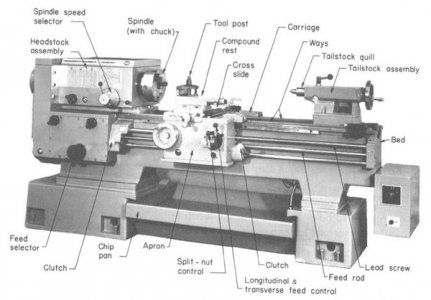
Explanation of the standard components of most lathes:
• Bed: Usually made of cast iron. Provides a heavy rigid frame on which all the main components are mounted.
• Ways: Inner and outer guide rails that are precision machined parallel to assure accuracy of movement.
• Headstock: mounted in a fixed position on the inner ways, usually at the left end. Using a chuck, it rotates the work.
• Gearbox: inside the headstock, providing multiple speeds with a geometric ratio by moving levers.
• Spindle: Hole through the headstock to which bar stock can be fed, which allows shafts that are up to 2 times the length between lathe centers to be worked on one end at a time.
• Chuck: 3-jaw (self centering) or 4-jaw (independent) to clamp part being machined.
• Chuck: allows the mounting of difficult workpieces that are not round, square or triangular.
• Tailstock: Fits on the inner ways of the bed and can slide towards any position the headstock to fit the length of the work piece. An optional taper turning attachment would be mounted to it.
• Tailstock Quill: Has a Morse taper to hold a lathe center, drill bit or other tool.
• Carriage: Moves on the outer ways. Used for mounting and moving most the cutting tools.
• Cross Slide: Mounted on the traverse slide of the carriage, and uses a handwheel to feed tools into the workpiece.
• Tool Post: To mount tool holders in which the cutting bits are clamped.
• Compound Rest: Mounted to the cross slide, it pivots around the tool post.
• Apron: Attached to the front of the carriage, it has the mechanism and controls for moving the carriage and cross slide.
• Feed Rod: Has a keyway, with two reversing pinion gears, either of which can be meshed with the mating bevel gear to forward or reverse the carriage using a clutch.
• Lead Screw: For cutting threads.
• Split Nut: When closed around the lead screw, the carriage is driven along by direct drive without using a clutch.
• Quick Change Gearbox: Controls the movement of the carriage using levers.
• Steady Rest: Clamped to the lathe ways, it uses adjustable fingers to contact the workpiece and align it. Can be used in place of tailstock or in the middle to support long or unstable parts being machined.
• Follow Rest: Bolted to the lathe carriage, it uses adjustable fingers to bear against the workpiece opposite the cutting tool to prevent deflection.
TYPES OF LATHES
Lathes can be divided into three types for easy identification: engine lathe, turret lathe, and special purpose lathes. Some smaller ones are bench mounted and semi-portable. The larger lathes are floor mounted and may require special transportation if they must be moved. Field and maintenance shops generally use a lathe that can be adapted to many operations and that is not too large to be moved from one work site to another. The engine lathe (Figure 7-1) is ideally suited for this purpose. A trained operator can accomplish more machining jobs with the engine lathe than with any other machine tool. Turret lathes and special purpose lathes are usually used in production or job shops for mass production or specialized parts, while basic engine lathes are usually used for any type of lathe work. Further reference to lathes in this chapter will be about the various engine lathes.
Machinist Table 7-l ). After grinding to the finished shape, the tool bit should be honed lightly on an oilstone to remove any burrs or irregular high spots. The smoother the finish on the cutting tool, the smoother the finish on the work. Figure 7-13 shows the steps involved in grinding a round nose tool bit to be used for turning in either direction. As a safety note, never use the side of the grinding wheel to grind a tool bit, as this could weaken the bonding of the wheel and cause it to crack and explode.
Machinist Table 7-2 lists specific ranges of cutting speeds for turning and threading various materials under normal lathe conditions, using normal feeds and depth of cuts. Note that in Table 7-2 the measurement calculations are in inch and metric measures. The diameter measurements used in these calculations are the actual working diameters that are being machined, and not necessarily the largest diameter of the material. The cutting speeds have a wide range so that the lower end of the cutting speed range can be used for rough cutting and the higher end for finish cutting. If no cutting speed tables are available, remember that, generally, hard materials require a slower cutting speed than soft or ductile materials. Materials that are machined dry, without coolant, require a slower cutting speed than operations using coolant. Lathes that are worn and in poor condition will require slower speeds than machines that are in good shape. If carbide-tipped tool bits are being used, speeds can be increased two to three times the speed used for high-speed tool bits.
Feed
Feed is the term applied to the distance the tool bit advances along the work for each revolution of the lathe spindle. Feed is measured in inches or millimeters per revolution, depending on the lathe used and the operator's system of measurement. Machinist Table 7-3 is a guide that can be used to select feed for general roughing and finishing operations. A light feed must be used on slender and small workpieces to avoid damage. If an irregular finish or chatter marks develop while turning, reduce the feed and check the tool bit for alignment and sharpness. Regardless of how the work is held in the lathe, the tool should feed toward the headstock. This results in most of the pressure of the cut being put on the work holding device. If the cut must be fed toward the tailstock, use light feeds and light cuts to avoid pulling the workpiece loose.
Depth of Cut
Depth of cut is the distance that the tool bit moves into the work, usually measured in thousandths of an inch or in millimeters. General machine practice is to use a depth of cut up to five times the rate of feed, such as rough cutting stainless steel using a feed of 0.020 inch per revolution and a depth of cut of 0.100 inch, which would reduce the diameter by 0.200 inch. If chatter marks or machine noise develops, reduce the depth of cut.
MICROMETER COLLAR
Graduated micrometer collars can be used to accurately measure this tool bit movement to and away from the lathe center axis. Thus, the depth of cut can be accurately measured when moving the tool bit on the cross slide by using the cross slide micrometer collar. The compound rest is also equipped with a micrometer collar. These collars can measure in inches or in millimeters, or they can be equipped with a dual readout collar that has both. Some collars measure the exact tool bit movement, while others are designed to measure the amount of material removed from the workpiece (twice the tool bit movement). Consult the operator's instruction manual for specific information on graduated collar use.
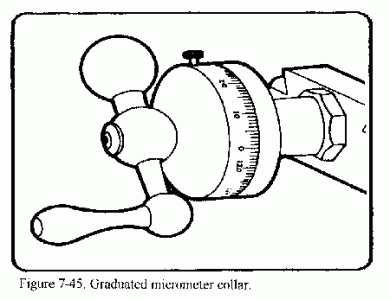
FACING
Facing is machining the ends and shoulders of a piece of stock smooth, flat, and perpendicular to the lathe axis. Facing is used to cut work to the desired length and to produce a surface from which accurate measurements may be taken.
Facing Work in a Chuck
Facing is usually performed with the work held in a chuck or collet. Allow the workpiece to extend a distance no more than 1 1/2 times the work diameter from the chuck jaws, and use finishing speeds and feeds calculated using the largest diameter of the workpiece. The tool bit may be fed from the outer edge to the center or from the center to the outer edge. Normal facing is done from the outer edge to the center since this method permits the operator to observe the tool bit and layout line while starting the cut. This method also eliminates the problem of feeding the tool bit into the solid center portion of the workpiece to get a cut started.. Use a left-hand finishing tool bit and a right-hand tool holder when facing from the outer edge toward the center. Work that has a drilled or bored hole in the center may be faced from the center out to the outer edge if a right-hand finishing tool bit is used. Avoid excessive tool holder and tool bit overhang when setting up the facing operation. Set the tool bit exactly on center to avoid leaving a center nub on the workpiece (Figure 7-46 ). Use the tailstock center point as a reference point when setting the tool bit exactly on center. If no tailstock center is available, take a trial cut and readjust as needed. If using the cross slide power feed to move the tool bit (into the center), disengage power when the tool bit is within l/16 inch of the center and finish the facing cut using hand feed.
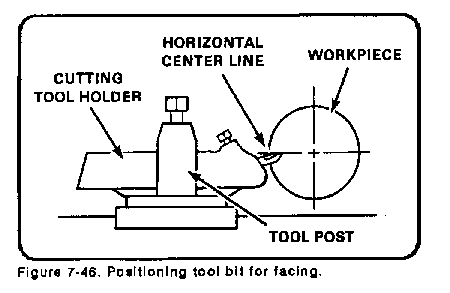
Facing Work Between Centers
Sometimes the workpiece will not fit into a chuck or collet, so facing must be done between centers. To properly accomplish facing between centers, the workpiece must be center-drilled before mounting into the lathe. A half male center (with the tip well lubricated with a white lead and oil mixture) must be used in the lathe tailstock to provide adequate clearance for the tool bit. The tool bit must be ground with a sharp angle to permit facing to the very edge of the center drilled hole (Figure 7-47). Start the facing cut at the edge of the center-drilled hole after checking for tool bit clearance, and feed the cutting tool out to the edge. Use light cuts and finishing feeds, which will reduce the tension put on the half male center. Replace the half male center with a standard center after the facing operation, since the half male center will not provide adequate support for general turning operations. Only a small amount of material can be removed while facing between centers. If too much material is removed, the center-drilled hole will become too small to support the workpiece.
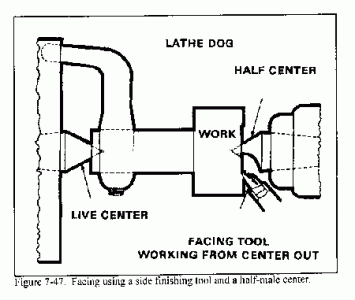
Precision Facing
Special methods must be used to face materials to a precise length. One method is to mount the work in a chuck and lightly face one end with a cleanup cut. Then, reverse the stock and face it to the scribed layout line. This method may not be as accurate as other methods, but it will work for most jobs. A more precise method to face a piece of stock to a specified length is to turn the compound rest to an angle of 30 degrees to the cross slide and then use the graduated micrometer collar to measure tool bit movement, Figure 7-48. At this angle of the compound rest, the movement of the cutting tool will always be half of the reading of the graduated collar. Thus, if the compound rest feed is turned 0.010 inch, the tool bit will face off 0.005 inch of material. With the compound rest angled at 30°, a light cut may be made on the first end, then the piece reversed and faced to accurate length. Always lock the carriage down to the bed. This provides the most secure and accurate base for the cutting tool and helps eliminate unwanted vibration during facing operations. Another way to face to a precise length is to use the lathe carriage micrometer stop to measure the carriage and tool bit movement. Using the micrometer stop can sometimes be faster and easier than using the compound rest graduated collar for measuring tool bit movement.
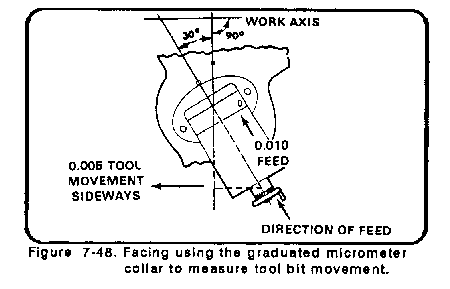
STRAIGHT TURNING
Straight turning, sometimes called cylindrical turning, is the process of reducing the work diameter to a specific dimension as the carriage moves the tool along the work. The work is machined on a plane parallel to its axis so that there is no variation in the work diameter throughout the length of the cut. Straight turning usually consists of a roughing cut followed by a finishing cut. When a large amount of material is to be removed, several roughing cuts may need to be taken. The roughing cut should be as heavy as the machine and tool bit can withstand. The finishing cut should be light and made to cut to the specified dimension in just one pass of the tool bit. When using power feed to machine to a specific length, always disengage the feed approximately 1/16-inch away from the desired length dimension, and then finish the cut using hand feed.
Setting Depth of Cut
In straight turning, the cross feed or compound rest graduated collars are used to determine the depth of cut, which will remove a desired amount from the workpiece diameter. When using the graduated collars for measurement, make all readings when rotating the handles in the forward direction. The lost motion in the gears, called backlash, prevents taking accurate readings when the feed is reversed. If the feed screw must be reversed, such as to restart a cut, then the backlash must be taken up by turning the feed screw handle in the opposite direction until the movement of the screw actuates the movement of the cross slide or compound rest. Then turn the feed screw handle in the original or desired direction back to the required setting.
Setting Tool Bit for Straight Turning
See Figure 7-49. For most straight turning operations, the compound rest should be aligned at an angle perpendicular to the cross slide, and then swung 30° to the right and clamped in position. The tool post should be set on the left-hand side of the compound rest T-slot, with a minimum of tool bit and tool holder overhang.
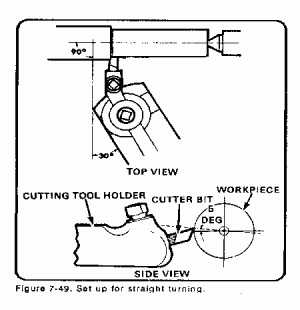
When the compound rest and tool post are in these positions, the danger of running the cutting tool into the chuck or damaging the cross slide are minimized. Position the roughing tool bit about 5° above center height for the best cutting action. This is approximately 3/64-inch above center for each inch of the workpiece diameter. The finishing tool bit should be positioned at center height since there is less torque during finishing. The position of the tool bit to the work should be set so that if anything occurs during the cutting process to change the tool bit alignment, the tool bit will not dig into the work, but instead will move away from the work. Also, by setting the tool bit in this position, chatter will be reduced. Use a right-hand turning tool bit with a slight round radius on the nose for straight turning. Always feed the tool bit toward the headstock unless turning up to an inside shoulder. Different workpieces can be mounted in a chuck, in a collet, or between centers. Which work holding device to use will depend on the size of the work and the particular operation that needs to be performed.
Turning Work Between Centers
Turning work that is held between centers is one accurate method that is available. The chief advantage of using this method is that the work can be removed from the lathe and later replaced for subsequent machining operations without disturbing the trueness of the turned surface in relation to the center holes of the workpiece. The lathe centers must be in good condition and carefully aligned if the turning operation is to be accurate. If necessary, true the centers and realign as needed. After the workpiece is center-drilled, place a lathe dog (that is slightly larger in diameter than the workpiece) on the end of the work that will be toward the headstock, and tighten the lathe dog bolt securely to the workpiece). If using a dead center in the tailstock, lubricate the center with a mixture of white lead and motor oil. A ball bearing live center is best for the tailstock center since this center would not need lubrication and can properly support the work. Extend the tailstock spindle out about 3 inches and loosen the tailstock clamp-down nut. Place the work with the lathe dog end on the headstock live center and slide the tailstock forward until the tailstock center will support the work; then, secure the tailstock with the clamp-down nut. Adjust the tail of the lathe dog in the drive plate slot, making sure that the tail does not bind into the slot and force the work out of the center. A good fit for the lathe dog is when there is clearance at the top and bottom of the drive plate slot on both sides of the lathe dog tail. Tension should be applied to hold the work in place, but not so much tension that the tail of the lathe dog will not move freely in the drive -plate slot.
Check tool bit clearance by moving the tool bit to the furthest position that can be cut without running into the lathe dog or the drive plate. Set the lathe carriage stop or micrometer carriage stop at this point to reference for the end of the cut and to protect the lathe components from damage. Set the speed, feed, and depth of cut for a roughing cut and then rough cut to within 0.020 inch of the final dimension. Perform a finish cut, flip the piece over, and change the lathe dog to the opposite end. Then rough and finish cut the second side to final dimensions.
Turning Work in Chucks
Some work can be machined more efficiently by using chucks, collets, mandrels, or faceplates to hold the work. Rough and finish turning using these devices is basically the same as for turning between centers. The workpiece should not extend too far from the work holding device without adequate support. If the work extends more than three times the diameter of the workpiece from the chuck or collet, additional support must be used such as a steady rest or a tailstock center support. When turning using a mandrel or faceplate to hold an odd-shaped workpiece, use light cuts and always feed the cutting tool toward the headstock. Every job may require a different setup and a different level of skill. Through experience, each machine operator will learn the best methods for holding work to be turned.
MACHINING SHOULDERS, CORNERS, UNDERCUTS, GROOVES, AND PARTING
Shoulders
Frequently, it will be necessary to machine work that has two or more diameters in its length. The abrupt step, or meeting place, of the two diameters is called a shoulder. The workpiece may be mounted in a chuck, collet, or mandrel, or between centers as in straight turning. Shoulders are turned, or formed, to various shapes to suit the requirements of a particular part. Shoulders are machined to add strength for parts that are to be fitted together, make a corner, or improve the appearance of a part. The three common shoulders are the square, the filleted, and the angular shoulder (Figure 7-50).
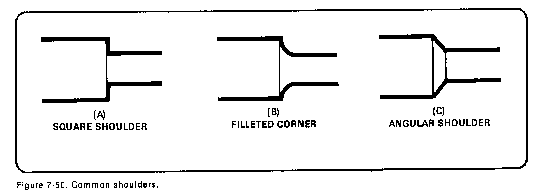
Square shoulders are used on work that is not subject to excessive strain at the corners. This shape provides a flat clamping surface and permits parts to be fitted squarely together. There are many different ways to accurately machine a square shoulder. One method is to use a parting tool bit to locate and cut to depth the position of the shoulder. Straight-turning the diameter down to the desired size is then the same as normal straight turning. Another method to machine a square shoulder is to rough out the shoulder slightly oversize with a round-nosed tool bit, and then finish square the shoulders to size with a side-finishing tool bit. Both of these methods are fine for most work, but may be too time-consuming for precise jobs. Shoulders can be machined quickly and accurately by using one type of tool bit that is ground and angled to straight turn and face in one operation (Figure 7-51).
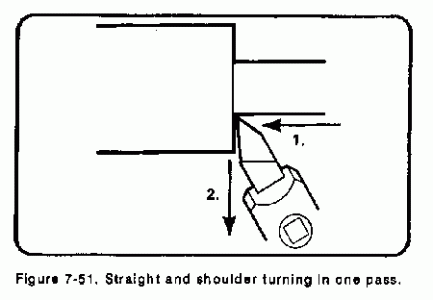
Set up the micrometer carriage stop to align the shoulder dimension; then, in one pass of the tool bit, feed the tool bit left to turn the smaller diameter until contact is made with the carriage stop. Change the direction to feed out from center and face the shoulder out to the edge of the workpiece. The lathe micrometer stop measures the length of the shoulder and provides for a stop or reference for the tool bit. Shoulder turning in this manner can be accomplished with a few roughing cuts and a finishing cut.
Filleted Shoulders
Filleted shoulders or corners, are rounded to be used on parts which require additional strength at the shoulder. These shoulders are machined with a round-nose tool bit or a specially formed tool bit (Figure 7-52). This type of shoulder can be turned and formed in the same manner as square shoulders. Filleted corners are commonly cut to double-sided shoulders (see Undercuts).
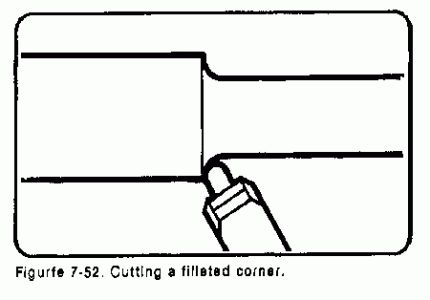
Angular Shoulders
Angular shoulders although not as common as filleted shoulders, are sometimes used to give additional strength to corners, to eliminate sharp corners, and to add to the appearance of the work. Angular shoulders do not have all the strength of filleted corners but are more economical to produce due to the simpler cutting tools. These shoulders are turned in the same manner as square shoulders by using a side turning tool set at the desired angle of the shoulder, or with a square-nosed tool set straight into the work (Figure 7-53).
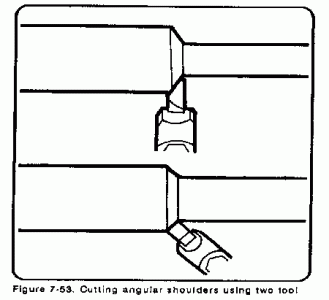
Corners
Corners are turned on the edges of work to break down sharp edges and to add to the general appearance of the work. Common types of corners are chamfered, rounded, and square (Figure 7-54). Chamfered (or angular) corners may be turned with the side of a turning tool or the end of a square tool bit, as in angular shoulder turning. Round corners are produced by turning a small radius on the ends of the work. The radius may be formed by hand manipulation of the cross slide and carriage using a turning tool. An easier method is to use a tool bit specifically ground for the shape of the desired corner. Still another method is to file the radius with a standard file. A square corner is simply what is left when making a shoulder, and no machining is needed.
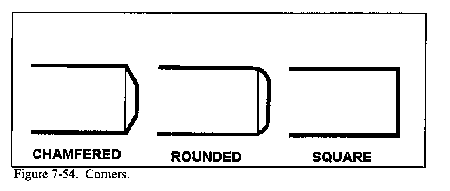
Undercuts
Undercuts are the reductions in diameter machined onto the center portion of workpieces (Figure 7-55) to lighten the piece or to reduce an area of the part for special reasons, such as holding an oil seal ring. Some tools, such as drills and reamers, require a reduction in diameter at the ends of the flutes to provide clearance or runout for a milling cutter or grinding wheel. Reducing the diameter of a shaft or workpiece at the center with filleted shoulders at each end may be accomplished by the use of a round-nosed turning tool bit. This tool bit may or may not have a side rake angle, depending on how much machining needs to be done. A tool bit without any side rake is best when machining in either direction. Undercutting is done by feeding the tool bit into the workpiece while moving the carriage back and forth slightly. This prevents gouging and chatter occurring on the work surface.
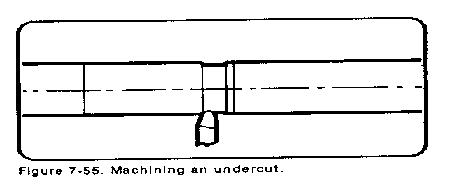
Grooves
Grooving (or necking) is the process of turning a groove or furrow on a cylinder, shaft, or workpiece. The shape of the tool and the depth to which it is fed into the work govern the shape and size of the groove. The types of grooves most commonly used are square, round, and V-shaped (Figure 7-56). Square and round grooves are frequently cut on work to provide a space for tool runout during subsequent machining operations, such as threading or knurling. These grooves also provide a clearance for assembly of different parts. The V-shaped groove is used extensively on step pulleys made to fit a V-type belt. The grooving tool is a type of forming tool. It is ground without side or back rake angles and set to the work at center height with a minimum of overhang. The side and end relief angles are generally somewhat less than for turning tools.
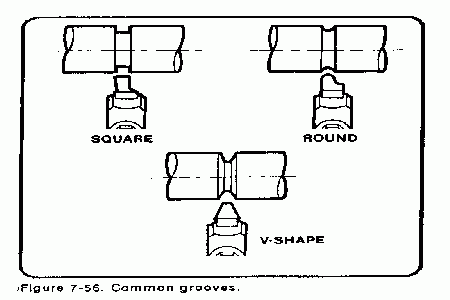
In order to cut a round groove of a definite radius on a cylindrical surface, the tool bit must be ground to fit the proper radius gage (Figure 7-57). Small V-grooves may be machined by using a form tool ground to size or just slightly undersize. Large V-grooves may be machined with the compound rest by finishing each side separately at the desired angle. This method reduces tool bit and work contact area, thus reducing chatter, gouging, and tearing. Since the cutting surface of the tool bit is generally broad, the cutting speed must be slower than that used for general turning. A good guide is to use half of the speed recommended for normal turning. The depth of the groove, or the diameter of the undercut, may be checked by using outside calipers or by using two wires and an outside micrometer (Figure 7-58).
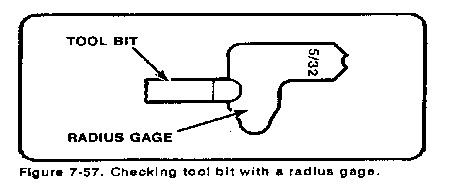
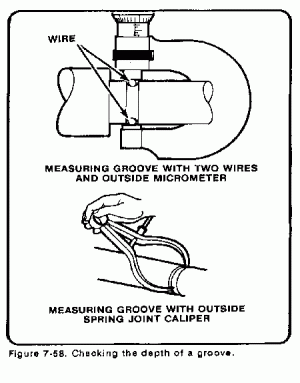
When a micrometer and two wires are used, the micrometer reading is equal to the measured diameter of the groove plus two wire diameters.
To calculate measurement over the wires, use the following formula:
Measurement = Outside Diameter + (2 x wires) - 2 x radius).
Parting
Parting is the process of cutting off a piece of stock while it is being held in the lathe. This process uses a specially shaped tool bit with a cutting edge similar to that of a square-nosed tool bit. When parting, be sure to use plenty of coolant, such as a sulfurized cutting oil (machine cast iron dry). Parting tools normally have a 5° side rake and no back rake angles. The blades are sharpened by grinding the ends only. Parting is used to cut off stock, such as tubing, that is impractical to saw off with a power hacksaw.
Parting is also used to cut off work after other machining operations have been completed (Figure 7-59). Parting tools can be of the forged type, inserted blade type, or ground from a standard tool blank. In order for the tool to have maximum strength, the length of the cutting portion of the blade should extend only enough to be slightly longer than half of the workpiece diameter (able to reach the center of the work). Never attempt to part while the work is mounted between centers.
Machinist Table 7-4 in Appendix A.
Brown and Sharpe tapers are used for taper shanks on tools such as end mills and reamers. The taper is approximately ½ inch per foot for all sizes except for taper No 10, where the taper is 0.5161 inch per foot.
The American Standard machine tapers are composed of a self-holding series and a steep taper series. The self-holding taper series consists of 22 sizes which are given in Machinist Table 7-5 in Appendix A. The name "self-holding" has been applied where the angle of the taper is only 2° or 3° and the shank of the tool is so firmly seated in its socket that there is considerable frictional resistance to any force tending to. turn or rotate the tool in the holder. The self-holding tapers are composed of selected tapers from the Morse, the Brown and Sharpe, and the ¾-inch-per foot machine taper series. The smaller sizes of self-holding tapered shanks are provided with a tang to drive the cutting tool. Larger sizes employ a tang drive with the shank held by a key, or a key drive with the shank held with a draw bolt. The steep machine tapers consist of a preferred series and an intermediate series as given in Machinist Table 7-6 in Appendix A. A steep taper is defined as a taper having an angle large enough to ensure the easy or self-releasing feature. Steep tapers have a 3 ½-inch taper per foot and are used mainly for aligning milling machine arbors and spindles, and on some lathe spindles and their accessories.
The Jarno taper is based on such simple formulas that practically no calculations are required when the number of taper is known. The taper per foot of all Jarno tapers is 0.600 inch per foot. The diameter at the large end is as many eighths, the diameter at the small end is as many tenths, and the length as many half-inches as indicated by the number of the taper. For example: A No 7 Jarno taper is 7/8 inch in diameter at the large end; 7/10 or 0.7 inch in diameter at the small end; and 7/2, or 3 ½ inches long. Therefore, formulas for these dimensions would read:
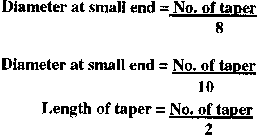
The Jarno taper is used on various machine tools, especially profiling machines and die-sinking machines. It has also been used for the headstock and tailstock spindles on some lathes.
The Standard taper pins are used for positioning and holding parts together and have a ¼-inch taper per foot. Standard sizes in these pins range from No 7/0 to No 10 and are given in Machinist Table 7-7 in Appendix A. The tapered holes used in conjunction with the tapered pins utilize the processes of step-drilling and taper reaming.
To preserve the accuracy and efficiency of tapers (shanks and holes), they must be kept free from dirt, chips, nicks, or burrs. The most important thing in regard to tapers is to keep them clean. The next most important thing is to remove all oil by wiping the tapered surfaces with a soft, dry cloth before use, because an oily taper will not hold.
SCREW THREAD CUTTING
Screw threads are cut with the lathe for accuracy and for versatility. Both inch and metric screw threads can be cut using the lathe. A thread is a uniform helical groove cut inside of a cylindrical workpiece, or on the outside of a tube or shaft. Cutting threads by using the lathe requires a thorough knowledge of the different principles of threads and procedures of cutting. Hand coordination, lathe mechanisms, and cutting tool angles are all interrelated during the thread cutting process. Before attempting to cut threads on the lathe a machine operator must have a thorough knowledge of the principles, terminology and uses of threads.
Machinist Table 7-8 in Appendix A). These metric threads are identified by the capital M, the nominal diameter, and the pitch. For example, a metric thread with an outside diameter of 5 mm and a pitch of 0.8 mm would be given as M 5 x 0.8. The IS0 metric thread standard simplifies thread design, provides for good strong threads, and requires a smaller inventory of screw fasteners than used by other thread forms. This IS0 Metric thread has a 60° included angle and a crest that is 1.25 times the pitch (which is similar to the National thread form). The depth of thread is 0.6134 times the pitch, and the flat on the root of the thread is wider than the crest. The root of the ISO Metric thread is 0.250 times the pitch (Machinist Table 7-9).
The Unified and American (National) thread forms designate classifications for fit to ensure that mated threaded parts fit to the tolerances specified. The unified screw thread form specifies several classes of threads which are Classes 1A, 2A, and 3A for screws or external threaded parts, and 1B, 2B, and 3B for nuts or internal threaded parts. Classes 1 A and 1 B are for a loose fit where quick assembly and rapid production are important and shake or play is not objectionable. Classes 2A and 2B provide a small amount of play to prevent galling and seizure in assembly and use, and sufficient clearance for some plating. Classes 2A and 2B are recommended for standard practice in making commercial screws, bolts, and nuts. Classes 3A and 3B have no allowance and 75 percent of the tolerance of Classes 2A and 2B A screw and nut in this class may vary from a fit having no play to one with a small amount of play. Only high grade products are held to Class 3 specifications.
Four distinct classes of screw thread fits between mating threads (as between bolt and nut) have been designated for the American (National) screw thread form. Fit is defined as "the relation between two mating parts with reference to ease of assembly. " These four fits are produced by the application of tolerances which are listed in the standards.
The four fits are described as follows:
In general, screw thread designations give the screw number (or diameter) first, then the thread per inch. Next is the thread series containing the initial letter of the series, NC (National Coarse), UNF (Unified Fine), NS (National Special), and so forth, followed by the class of fit. If a thread is left-hand, the letters LH follow the fit. An example of designations is as follows:
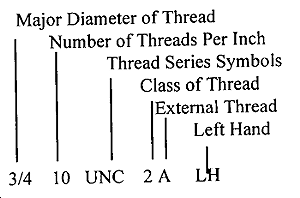
Two samples and explanations of thread designations are as follows:
The older metric screw thread system has over one hundred different thread sizes and several ways of designating the fit between parts, including tolerance grades, tolerance positions, and tolerance classes. A simple system was devised with the latest ISO Metric thread standard that uses one internal fit and two external fit designations to designate the tolerance (class) of fit. The symbol 6H is used to designate the fit for an internal thread (only the one symbol is used). The two symbols 6g and 5g6g are used to designate the fit for an external thread, 6g being used for general purpose threads and Sg6g used to designate a close fit. A fit between a pair of threaded parts is indicated by the internal thread (nut) tolerance fit designation followed by the external thread (bolt) tolerance fit designation with the two separated by a stroke. An example is M 5 x 0.8-Sg6g/6H, where the nominal or major diameter is 5 mm, the pitch is 0.8 mm, and a close fit is intended for the bolt and nut. Additional information on ISO metric threads and specific fits can be found in any updated engineer's handbook or machinist's handbook.
THREAD CUTTING TOOL BITS
Cutting V-threads with a 60 degrees thread angle is the most common thread cutting operation done on a lathe. V-threads, with the 60 degree angle, are used for metric thread cutting and for American (National) threads and Unified threads. To properly cut V-shaped threads, the single point tool bit must be ground for the exact shape of the thread form, to include the root of the thread (Figure 7-75).
Machinist Table 7-10 in Appendix A lists the most common screw thread sizes. The difference between the maximum and minimum major diameters varies with different sizes of threads. Coarse threads have a larger difference between the two than fine threads. It is common practice, when machining threads on the lathe, to turn the outside diameter down to the maximum major diameter instead of the minimum major diameter, thus allowing for any error.
The workpiece may be set up in a chuck, in a collet, or between centers. If a long thread is to be cut, a steady rest or other support must be used to help decrease the chance of bending the workpiece. Lathe speed is set for the recommended threading speed (Machinist Lathe Table 7-2 in Appendix A).
To cut threads, move the threading tool bit into contact with the work and zero the compound rest dial. The threading tool bit must be set at the right end of the work; then, move the tool bit in the first depth of cut by using the graduated collar of the compound rest. Position the carriage half nut lever to engage the half nut to the lead screw in order to start the threading operation. The first cut should be a scratch cut of no more than 0.003 inch so the pitch can be checked. Engaging the half nut with the lead screw causes the carriage to move as the lead screw revolves. Cut the thread by making a series of cuts in which the threading tool follows the original groove for each cut. Use the thread chasing dial, Figure 7-82, to determine when to engage the half nut so that the threading tool will track properly. The dial is attached to the carriage and is driven by means of the lead screw. Follow the directions of the thread chasing dial, Figure 7-83, to determine when to engage the half nut lever.
Machinist Table 7-11)
The "best" wire size can be found by converting from inch to metric, or by using Machinist Table 7-11.
An optical comparator must be used to check the threads if the tolerance desired is less than 0.001 inch (0.02 mm). This type of thread measurement is normally used in industrial shops doing production work.
CUTTING INTERNAL THREADS
Internal threads are cut into nuts and castings in the same general manner as external threads. If a hand tap is not available to cut the internal threads, they must be machined on the lathe.
An internal threading operation will usually follow a boring and drilling operation, thus the machine operator must know drilling and boring procedures before attempting to cut internal threads. The same holder used for boring can be used to hold the tool bit for cutting internal threads. Lathe speed is the same as the speed for external thread cutting.
To prevent rubbing, the clearance of the cutter bit shank and boring tool bar must be greater for threading than for straight boring because of the necessity of moving the bit clear of the threads when returning the bit to the right after each cut.
The compound rest should be set at a 29° angle to the saddle so that the cutter bit will feed after each cut toward the operator and to his left.
Although the setup shown in Figure 7-86 would be impractical on extremely large lathes, it allows a degree of safety on common sized machines by having the compound ball crank positioned away from any work holding device that would be in use on the lathe, eliminating the possibility of the operator's hands or the compound rest contacting the revolving spindle and work holding devices.
Machinist Table 7-9. The single wire method can be used to measure the accuracy of the thread (Figure 7-90). A single wire or pin of the correct diameter is placed in the threaded groove and measured with a micrometer. The thread is the correct size when the micrometer reading over the wire is the same as the major diameter of the thread and the wire is placed tightly into the thread groove. The diameter of the wire to be used can be calculated by using this formula:
Wire diameter = 0.4872 x pitch
Thus, if 6 threads per inch are being cut, the wire size would be:
0.4872 x 1/6 = 0.081 inch
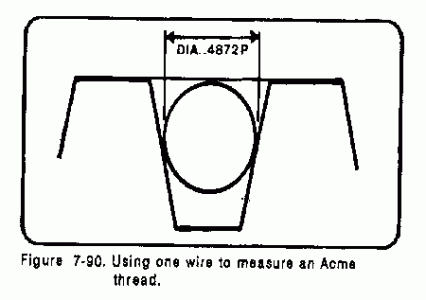
Cutting the 29° worm screw thread (Brown and Sharpe). The tool bit used to cut 29° worm screw threads will be similar to the Acme threading tool, but slightly longer with a different tip. Use Table 7-9 in Appendix A to calculate the length of the tool bit and tip width. The cutting is done just like cutting an Acme thread.
CUTTING SQUARE THREADS
Because of their design and strength, square threads are used for vise screws, jackscrews, and other devices where maximum transmission of power is needed. All surfaces of the square thread form are square with each other, and the sides are perpendicular to the center axis of the threaded part. The depth, the width of the crest, and root are of equal dimensions. Because the contact areas are relatively small and do not wedge together, friction between matching threads is reduced to a minimum. This fact explains why square threads are used for power transmission.
Before the square thread cutting tool can be ground, it is necessary first to determine the helix angle of the thread. The sides of the tool for cutting the square thread should conform with the helix angle of the thread (Figure 7-79).
For cutting the thread, the cutting edge of the tool should be ground to a width exactly one-half that of the pitch. For cutting the nut, it should be from 0.001 to 0.003 of an inch larger to permit a free fit of the nut on the screw.
The cutting of the square thread form presents some difficulty. Although it is square, this thread, like any other, progresses in the form of a helix, and thus assumes a slight twist. Some operators prefer to produce this thread in two cuts, the first with a narrow tool to the full depth and the second with a tool ground to size. This procedure relieves cutting pressure on the tool nose and may prevent springing the work. The cutting operation for square threads differs from cutting threads previously explained in that the compound rest is set parallel to the axis of the workpiece and feeding is done only with the cross feed. The cross feed is fed only 0.002 inch or 0.003 inch per cut. The finish depth of the thread is determined by the formula.
Depth = 1/2P
The width of the tool point is determined by this formula also and will depend upon the number of threads per inch to be machined. It is measured with a micrometer, as square thread gages are not available.
SPECIAL OPERATIONS ON THE LATHE
KNURLING ON THE LATHE
Knurling is a process of impressing a diamond shaped or straight line pattern into the surface of a workpiece by using specially shaped hardened metal wheels to improve its appearance and to provide a better gripping surface. Straight knurling is often used to increase the workpiece diameter when a press fit is required between two parts.
Holding Devices for Knurling
The setup for knurling can be made between centers or mounted in a solid chuck. Never attempt to knurl by holding the work in a rubber or metal collet chuck, since the great pressures of knurling could damage these devices. It is important to support the work while knurling. If mounting the work between centers, make the center holes as large as possible to allow for the strongest hold. If using a chuck to hold the work, use the tailstock center to support the end of the work. If doing a long knurl, use a steady rest to support the work and keep the piece from springing away from the tool.
Knurling Tools
The knurling tool (Figure 7-10) can be designed differently, but all accomplish the same operation. Two common types of knurling tools are the knuckle joint and revolving head type of knurling tools. The knuckle joint type is equipped with a single pair of rollers that revolve with the work as it is being knurled. The revolving head type of tool is fitted with three pairs of rollers so that the pitch can be changed to a different knurl without having to change the setup. There are two knurl patterns, diamond and straight.
There are three pitches of rollers, coarse, medium, and fine (Figure 7-91).
Machinist Table 4-2.
Supporting drills in the tailstock
Methods of supporting the twist drill in the tailstock can vary (Figure 7-95). Straight shank drills are usually held in a drill chuck, which is placed in the taper socket of the tailstock spindle. Combination drill and countersinks (center drills), counterbores, reamers, taps, and other small shank cutters can also be supported in this way.
Machinist Table 4-3). Always withdraw the drill and brush out the chips before attempting to check the depth of the hole. If the drill is wobbling and wiggling in the hole, use a tool holder turned backwards (Figure 7-96) to steady the drill. Always use a drill that is properly ground for the material to be drilled. Use care when feeding the drill into the work to avoid breaking the drill off in the work. The drill should never be removed from the work while the spindle is turning because the drill could be pulled off the tailstock spindle and cause injury or damage.
Machinist Table 4-3 for the proper cutting fluid for reaming. Never use power with a hand reamer or the work could be ruined.
FILING AND POLISHING ON THE LATHE
Filing and polishing are performed on the lathe to remove tool marks, reduce the dimension slightly, or improve the finish.
Filing on the Lathe
Mill files are generally considered best for lathe filing. The bastard cut mill type hand file is used for roughing and the second cut mill-type hand file for the finer class of work. Other types such as the round, half-round, and flat hand files may also be used for finishing irregular shaped workpieces. Never use a file without a handle.
For filing ferrous metals, the lathe spindle speed should be four or five times greater than the rough turning speed. For filing nonferrous metals, the lathe spindle speed should be only two or three times greater than the roughing speed. Too slow a speed may cause the workpiece to be filed out of round, while too high a speed will cause the file to slide over the workpiece, dulling the file and glazing the piece.
NOTE: When filing, file left-handed if at all possible to avoid placing your arm over the revolving chuck or lathe dog.
The file is held at an angle of about 10° to the right and moved with a slow sliding motion from left to right so that the teeth will have a shearing action (Figure 7-100). The direction of stroke and angle should never be the opposite, as this will cause chatter marks on the piece. The file should be passed slowly over the workpiece so that the piece will have made several revolutions before the stroke is completed. The pressure exerted on the file with the hands should be less than when filing at the bench. Since there are less teeth in contact with the workpiece, the file must be cleaned frequently to avoid scratching.
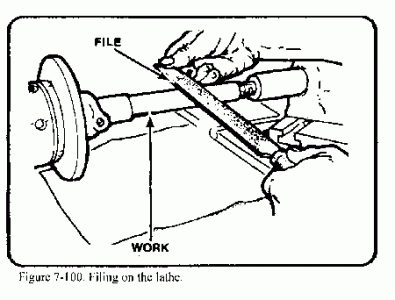
Since filing should be used for little more than to remove tool marks from the workpiece, only 0.002 to 0.005 inch should be left for the filing operation.
Polishing on the Lathe
Polishing with either abrasive cloth or abrasive paper is desirable to improve the surface finish after filing. Emery abrasive cloth is best for ferrous metals while abrasive paper often gives better results on nonferrous materials. The most effective speed for polishing with ordinary abrasives is approximately 5,000 feet per minute. Since most lathes are not capable of a speed this great for an average size workpiece, it is necessary to select as high a speed as conditions will permit.
In most cases the abrasive cloth or paper is held directly in the hand and applied to the workpiece, although it may be tacked over a piece of wood and used in the same manner as a file. Improvised clamps may also be used to polish plain round work.
Since polishing will slightly reduce the dimensions of the workpiece, 0.00025 to 0.0005 inch should be allowed for this operation. Figure 7-101 shows how to hold the abrasive strip when polishing. Note that the ends of the strip are separated. This prevents the strip from grabbing and winding around the work, which could pull the operator's hand into the work. Move the polishing strip slowly back and forth to prevent material building up on the strip which causes polishing rings to form on the work. To produce a bright surface, polish the work dry. To produce a dull satin finish, apply oil as the polishing operation is in progress.
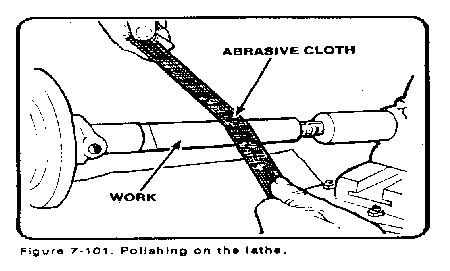
ECCENTRIC WORK ON THE LATHE
Eccentric work is work that is turned off center, or not on the normal center axis. An engine crankshaft is a good example of an eccentric workpiece. Crankshafts normally have a main center axis, called a main journal, and offset axes, which produce the throw and the eccentric diameters of the mechanism. An eccentric shaft may have two or more diameters and several different center axes. The amount of eccentricity, or half of the throw, is the linear distance that a set of center holes has been offset from the normal center axis of the workpiece. Eccentric turning on the lathe is used for the following eccentric turning situations:
When the throw is large enough to allow all centers to be located on the workpiece at the same time.
When the throw is too small to allow all centers to fit into the end of a workpiece at the same time. (The center drilled holes are too large.)
When the throw is so great that all centers cannot be located on the work, or in other words, a throw larger than the largest diameter of the workpiece. (This type of crank is usually made in separate pieces and connected together, since the cost of wasted material would be too great if constructed from one piece on the lathe).
Turning an Eccentric with Center Holes
Before an eccentric workpiece can be machined, it is necessary to center-drill both ends of the workpiece, including the offset centers. If the workpiece is large enough to position all center axes on the work at the same time, the machining operation will be simple and easy.
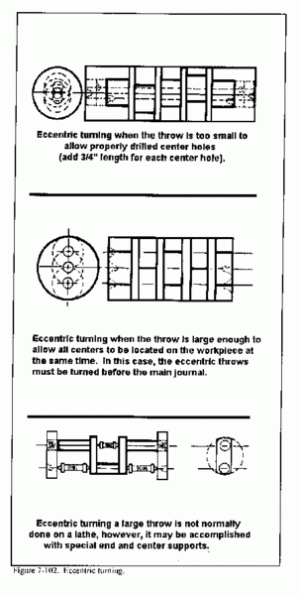
Additional throws are machined in the same manner. Throw positions may be started by cutting with a parting tool to establish the shoulders, which may aid the turning operation. The tool bit selected will depend on the material to be machined and on the depth of cut desired.
Turning an Eccentric with Close Center Holes
If turning an eccentric that has the different centers placed too close together, a different procedure should be used. Cut the stock 3/4 inch oversized and just face both ends to clean up the saw cuts Lay out and center-drill the normal. center axis and turn down those diameters on the center axis with the work mounted between centers. Remove the work and remount into a chuck. Face both ends to the required length and center-drill the offset centers. Remount the work between these centers and machine the eccentric diameters to size. For eccentric work that has a limited distance between each center, this method is safer than trying to use a very shallow center-drilled hole to hold the work between centers (Figure 7-102).
Turning an Eccentric Using Throw Plates
If the lathe is to be used to turn a crank with a great throw, or a throw that is greater than normally machined on a lathe (Figure 7-102), special throw plates must be fabricated to hold the ends of the work while turning. The special throw plates will be used as support blocks to enable the offset center holes to be machined into the throw plates and allow for eccentric turning. eccentric turning, it is not recommended for normal lathe operations. Special crankshaft turning and grinding equipment is available for this type of machining.
RECESSING DRILLED AND BORED HOLES
General
Recessing, sometimes called channeling or cambering, is the process of cutting a groove inside of a drilled, bored, or reamed hole. Recesses (Figure 7-103) are usually machined to provide room for the tool runout needed for subsequent operations such as internal threading.
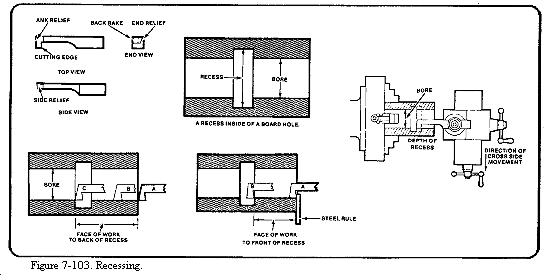
A boring bar and holder may be used as a recessing tool, since recessing tools have the same tool angles and are similar in shape to boring tools. A high-speed steel cutting tool bit, ground with a square nose, makes a satisfactory tool for cutting small chambers (Figure 7-103). The sides of the tool bit taper in from the cutting edge so that the nose of the tool is the widest part. The tool bit must extend from the holder a distance slightly greater than the depth of the chamber to prevent the holder from rubbing the bore of the work.
Machining a Recess
To cut a recess, set up the lathe as in a boring operation. Reference the face of the tool bit to the face of the work; then move the tool bit forward the required distance to the recess by using the micrometer stop or by using the compound rest graduated collar. The compound rest must be set parallel with the ways of the bed for this method. Add the width of the tool bit into the measurement or the recess will not be cut correctly. Position A (Figure 7-103) is the tool aligning to the work, position B is set over to the front shoulder of the recess, and position C is the set over to the back of the recess. Use the cross slide graduated collar to measure the distance to move the tool bit toward the operator, inside of the hole. Spindle speed may have to be reduced due to the shape of the tool bit causing chatter on the work. After cutting the recess, use inside calipers to check the diameter.
LATHE TOOL POST GRINDER
General
The tool post grinder is a portable grinding machine that can be mounted on the compound rest of a lathe in place of the tool post. It can be used to machine work that is too hard to cut by ordinary means or to machine work that requires a very fine finish. Figure 7-29 shows a typical tool post grinder. The grinder must be set on center, as shown in Figure 7-104. The centering holes located on the spindle shaft are used for this purpose. The grinding wheel takes the place of a lathe cutting tool. It can perform most of the operations that a cutting tool is capable of performing. cylindrical, tapered, and internal surfaces can be ground with the tool post grinder. Very small grinding wheels are mounted on tapered shafts known as quills to grind internal surfaces.
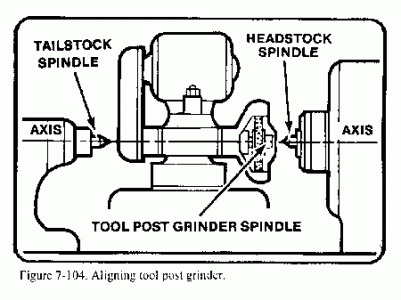
Selection of Grinding Wheels and Speeds
The grinding wheel speed is changed by using various sizes of pulleys on the motor and spindle shafts. An instruction plate on the grinder gives both the diameter of the pulleys required to obtain a given speed and the maximum safe speed for grinding wheels of various diameters. Grinding wheels are safe for operation at a speed just below the highest recommended speed. A higher than recommended speed may cause the wheel to disintegrate. For this reason, wheel guards are furnished with the tool post grinder to protect against injury. Always check the pulley combinations given on the instruction plate of the grinder when you mount a wheel. Be sure that the combination is not reversed, because this may cause the wheel to run at a speed far in excess of that recommended. During all grinding operations, wear goggles to protect your eyes from flying abrasive material.
Dressing the Grinding Wheel
The grinding wheel must be dressed and trued. Use a diamond wheel dresser to dress and true the wheel. The dresser is held in a holder that is clamped to the drive plate. Set the point of the diamond at center height and at a 10° to 15° angle in the direction of the grinding wheel rotation. The 10° to 15° angle prevents the diamond from gouging the wheel. Lock the lathe spindle by placing the spindle speed control lever in the low RPM position.
NOTE: The lathe spindle does not revolve when you are dressing the grinding wheel.
Remove the diamond dresser holder as soon as the dressing operation is completed. Bring the grinding wheel in contact with the diamond by carefully feeding the cross slide by hand. Move the wheel clear of the diamond and make a cut by means of the cross slide. The maximum depth of cut is 0.002 inch. Move the wheel slowly by hand back and forth over the point of the diamond. Move the carriage if the face of the wheel is parallel to the way of the lathe. Move the compound rest if the face of the wheel is at an angle. Make the final depth of cut of 0.0005 inch with a slow, even feed to obtain a good wheel finish.
Before you begin the grinding operation, cover the ways with a heavy piece of paper or use a shallow pan of water placed on the ways to collect the grinding dust that will accumulate from the grinding. This is to ensure none of the grinding burns to the ways or gets under the carriage which will cause the lathe premature wear. If you use a piece of paper, pay close attention that the sparks from the grinding operation do not cause the paper to ignite. If you use a shallow pan of water, make sure water is not spilled on the ways of the lathe. After all grinding operations, thoroughly clean and oil the lathe to remove any grinding dust that the paper pan of water missed.
Grinding Feeds, Speeds, and Depth of Cuts
Rotate the work at a fairly low speed during the grinding operations. The recommended surface foot speed is 60 to 100 FPM. The depth of cut depends upon the hardness of the work, the type of grinding wheel, and the desired finish.
Never take grinding cuts deeper than 0.002 inch Use a fairly low rate of feed. You will soon be able to judge whether the feed should be increased or decreased. Never stop the rotation of the work or the grinding wheel while they are in contact with each other.
Marking Position of Lathe Centers
Tool post grinders are often used to refinish damaged lathe centers. If the lathe is to be used for turning between centers in the near future, grind the tailstock center first, then the headstock center. Leave the headstock center in position for the turning operation. This method provides the greatest degree of accuracy. If you must remove the headstock center in order to perform other operations, marks placed on the headstock center, the sleeve, and the center will enable you to install them in the same position they were in when the center was ground. This will ensure the greatest degree of accuracy for future operations involving turning work between centers.
Setup for Grinding Lathe Centers
To refinish a damaged lathe center, you should first install headstock and tailstock centers after ensuring that the spindle holes, drill sleeves, and centers are clean and free of burrs. Next, position the compound rest parallel to the ways; then, mount the tool post grinder on the compound rest. Make sure that the grinding wheel spindle is at center height and aligned with the lathe centers. Move the compound rest 30° to the right of the lathe spindle axis, as shown in Figure 7-40. Mount the wheel dresser, covering the ways and carriage with rags to protect them from abrasive particles. Wear goggles to protect your eyes.
Grinding Lathe Centers
Start the grinding motor. Turn it on and off alternately, but let it run a bit longer each time, until the abrasive wheel is brought up to top speed. Dress the wheel, feeding the grinder with the compound rest. Then move the grinder clear of the headstock center and remove the wheel dresser. Set the lathe for the desired spindle speed and engage the spindle. Pick up the surface of the center. Take a light depth of cut and feed the grinder back and forth with the compound rest. Do not allow the abrasive wheel to feed entirely off the center. Continue taking additional cuts until the center cleans up. To produce a good finish, reduce the feed rate and the depth of cut to 0.0005. Grind off the center's sharp point, leaving a flat with a diameter about 1/32 inch. Move the grinder clear of the headstock and turn it off.
MILLING ON THE LATHE
Milling operations may be performed on the lathe by using the Versa-Mil, which is discussed in Chapter 9, and by using the lathe milling fixture. The lathe milling fixture complements the Versa-Mil and adds to the basic capabilities of the machine shop. If the Versa-Mil is out of action or being used for another job, many milling operations can still be accomplished by using the milling fixture (Figure 7-105). Capabilities, functions, and uses are outlined in the appropriate operator's manual, either TM 9-3465-200-10 or TM 9-3465-201-10.
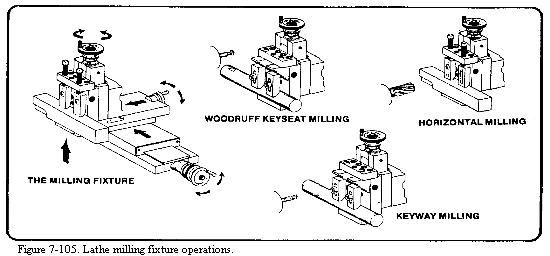
USING MICROMETER CARRIAGE STOP
The micrometer carriage stop, shown in Figure 7-28, is used to accurately position the lathe carriage. Move the carriage so that the cutting tool is approximately positioned. Clamp the micrometer carriage stop to the ways of the lathe, with the spindle in contact with the carriage. The spindle of the micrometer carriage stop can be extended or retracted by means of the knurled adjusting collar. The graduations on the collar, which indicate movement in thousandths of an inch, make it possible to set the spindle accurately. Next, bring the carriage in contact with the micrometer spindle again. The carriage can be accurately positioned within 0.001 inch. This is very useful when you are facing work to length, machining shoulders to an exact length, or accurately spacing internal and external grooves. After making a cut, bring the tool back to the start of the cut by means of the carriage stop. This feature is very useful when you must remove a tool, such as the internal recessing tool, from the hole to take measurements and then reposition it to take additional cuts. Always bring the carriage into contact with the stop by hand. Use power feed to bring the carriage within 1/32 inch of the stop. Move the carriage by hand the remaining distance.
USING STEADY AND FOLLOWER RESTS
General
The steady rest consists of a frame and three adjustable jaws which support the work, as shown in Figure 7-27. One purpose of the steady rest is to prevent springing or deflection of slender, flexible work; another is to furnish auxiliary support for the work to permit heavy cuts to be made; a third is to support work for drilling, boring, or internal threading. The over arm containing the top jaw can be unfastened and swung out of the way so that identical pieces can be removed and replaced without adjusting the jaws.
Bearing Surface
A bearing surface must be provided for the steady rest jaws. The bearing surface is usually machined directly on the work, as shown in Figure 7-106. When the work is too small in diameter to machine the bearing surface or shaped so that it would be impractical to machine one, you can use a cathead to provide the bearing surface. The cathead shown in Figure 7-27, has a bearing you surface, a hole through which the work extends, and adjusting screws. The adjusting screws fasten the cathead to the work. They are also used to align the bearing surface so can use a cathead to provide the bearing surface so that t is concentric to the work axis. Use a dial indicator to ensure concentricity.
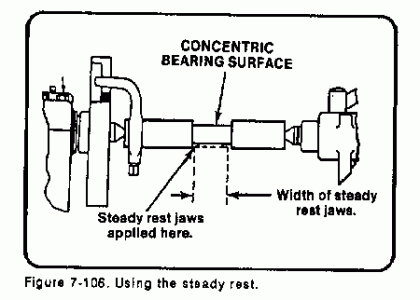
Setting up the Steady Rest
To setup the rest, first machine and polish the portion of the work that is to be used as the bearing surface. Clean the portion of the ways where the steady rest is to be mounted, place the steady rest on the ways and clamp loosely. Open the top of the steady rest and place the workpiece in the chuck with the bearing surface over the adjustable jaws. Clamp the steady rest securely to the ways. Close the top of the steady rest and adjust the jaws to the workpiece. There should be 0.001 inch clearance between the jaws and the workpiece. Tighten the locking screws on the adjustable jaws. Lubricate the bearing surface generously with a heavy oil before turning the lathe on. Proceed with the machining operation Continuously watch the bearing surface and the adjustable jaws to ensure a film of heavy oil is between them. As the machining operation continues, also check the bearing surface and adjustable jaws as when the workpiece heats up it will expand, closing the distance between the jaws and the workpiece.
Using Steady Rest with Headstock Center
When it is not possible to hold the work in the chuck, you can machine with one end supported by the headstock center and the other end supported by the steady rest. Use a leather strap or rawhide thong to tie the work to the driveplate and to prevent it from moving off the headstock center, as shown in Figure 7-107. Mount the work between centers and machine the bearing surface. Set up the steady rest. With the work mounted between the centers, tie the lathe dog, then remove the tailstock center and perform the necessary machining.
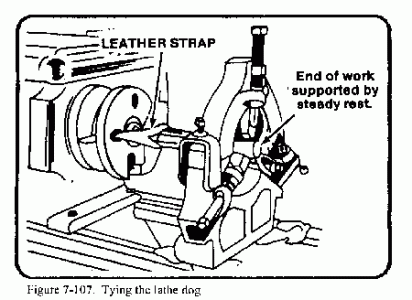
Using the Follower Rest
Long slender shafts that tend to whip and spring while they are being machined require the use of a follower rest (Figure 7-27). The follower rest is fastened to the carriage and moves with the cutting tool. The upper jaw prevents the work from climbing the cutting tool. The lower jaw prevents the work from springing away from the cutting tool The follower rest jaws are adjusted in the same manner as steady rest jaws. The follower rest is often used when long, flexible shafts are threaded, as shown in Figure 7-108. At the completion of each threading cut, remove any burrs that may have formed to prevent them from causing the work to move out of alignment.
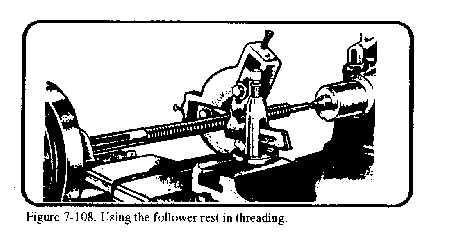
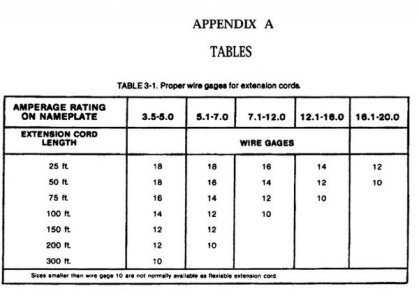
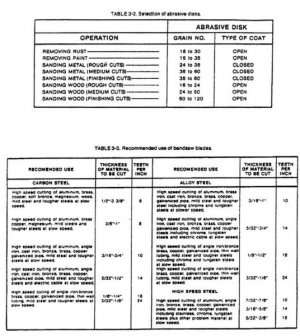
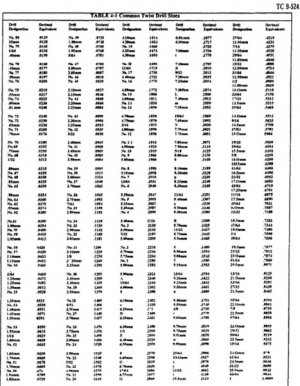
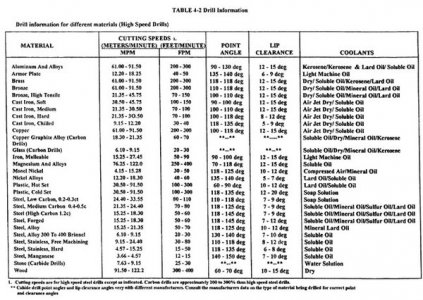
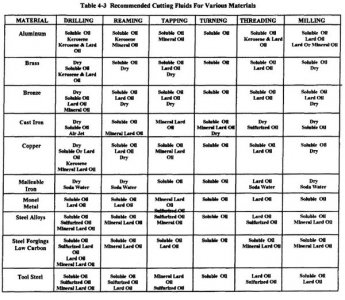
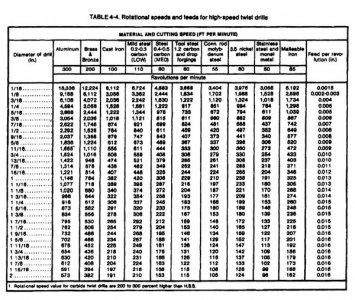
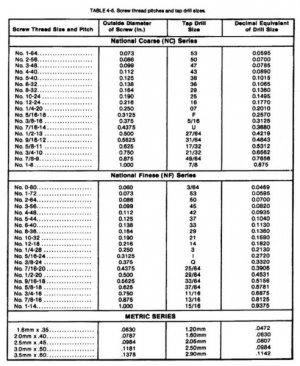
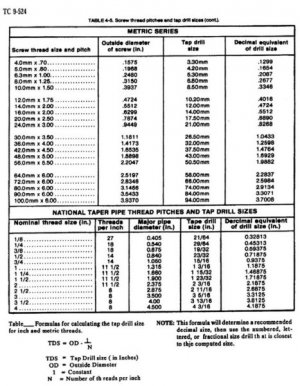
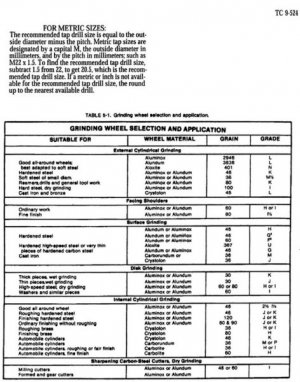
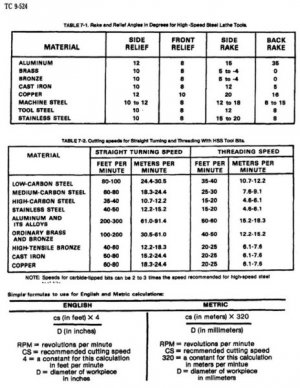
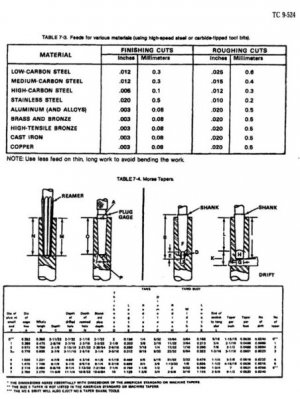
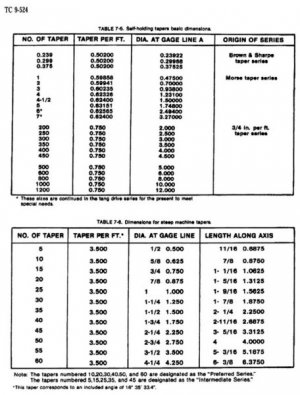
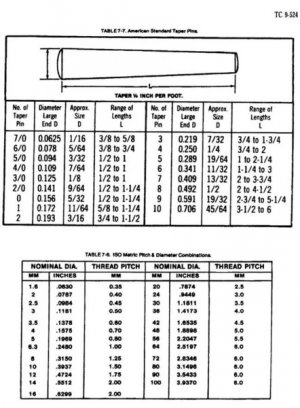
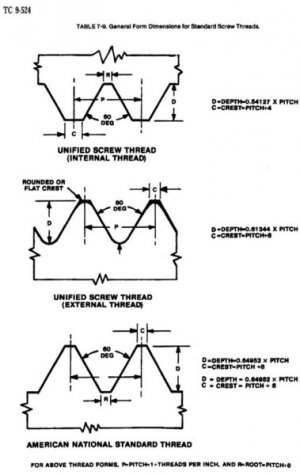
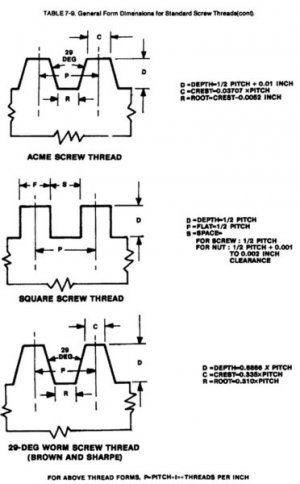
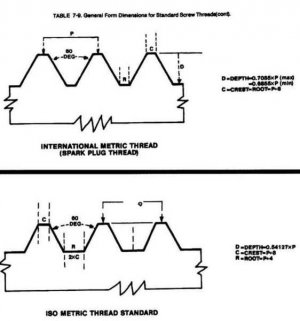
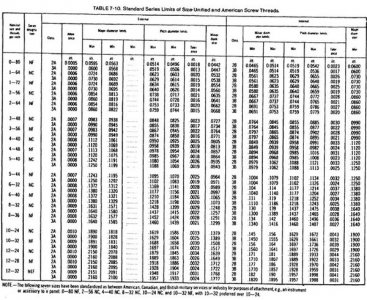
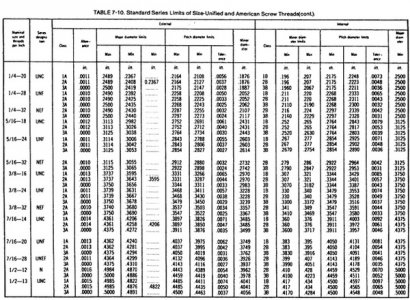
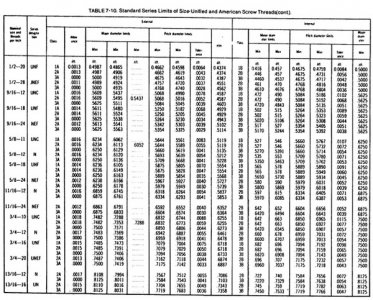
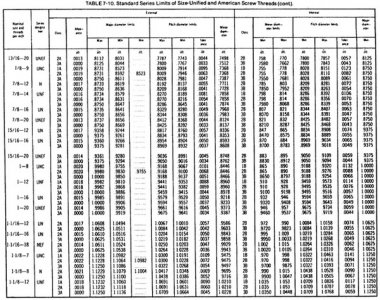
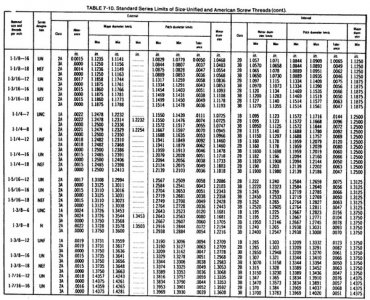
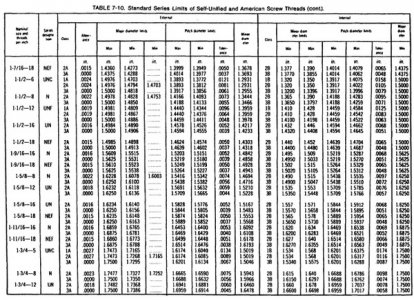
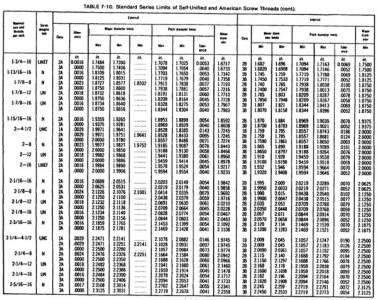
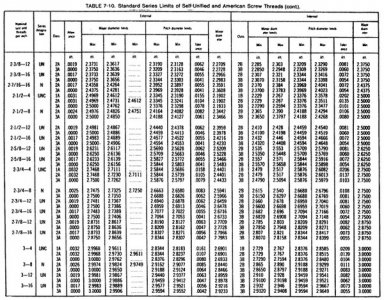
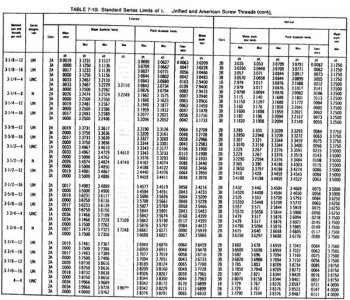
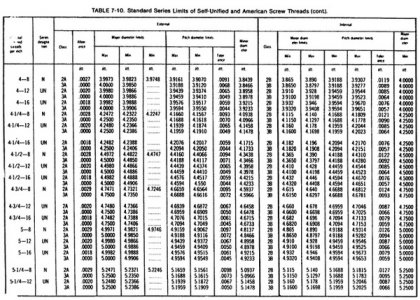
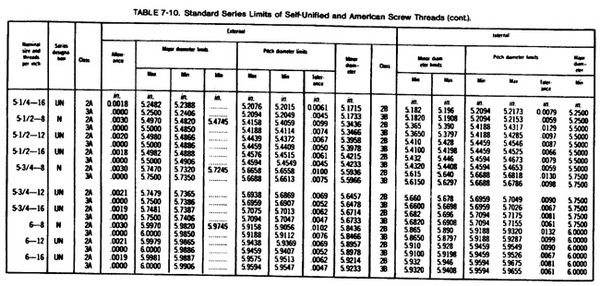
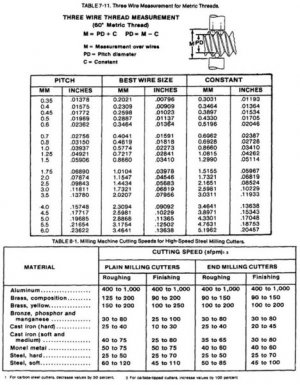
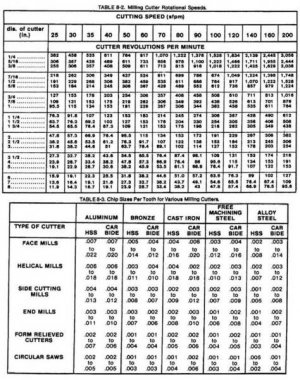
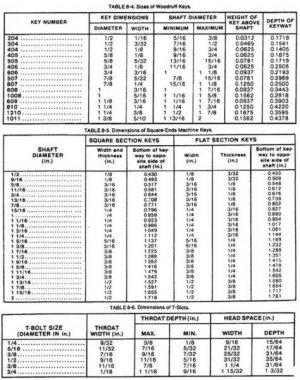
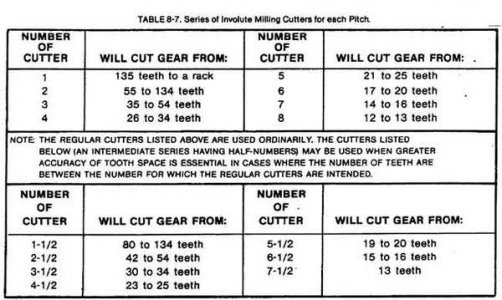
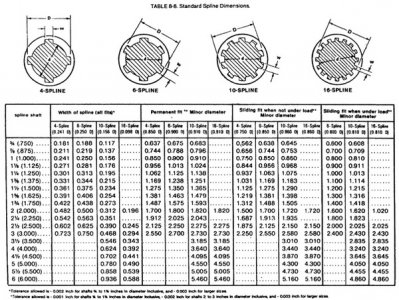
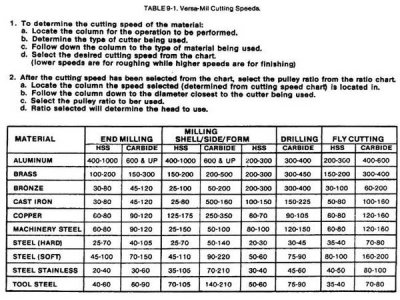
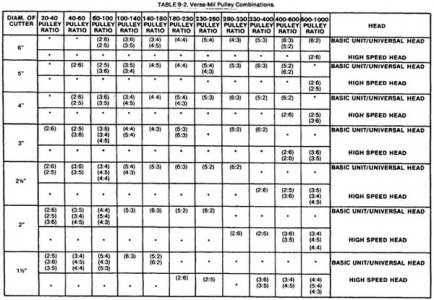
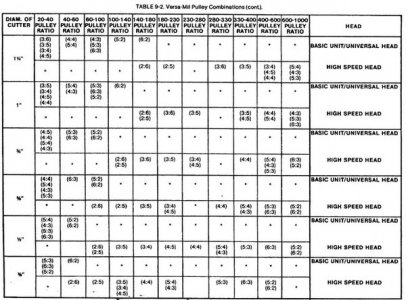

DIAGRAM OF LATHE MACHINE

Explanation of the standard components of most lathes:
• Bed: Usually made of cast iron. Provides a heavy rigid frame on which all the main components are mounted.
• Ways: Inner and outer guide rails that are precision machined parallel to assure accuracy of movement.
• Headstock: mounted in a fixed position on the inner ways, usually at the left end. Using a chuck, it rotates the work.
• Gearbox: inside the headstock, providing multiple speeds with a geometric ratio by moving levers.
• Spindle: Hole through the headstock to which bar stock can be fed, which allows shafts that are up to 2 times the length between lathe centers to be worked on one end at a time.
• Chuck: 3-jaw (self centering) or 4-jaw (independent) to clamp part being machined.
• Chuck: allows the mounting of difficult workpieces that are not round, square or triangular.
• Tailstock: Fits on the inner ways of the bed and can slide towards any position the headstock to fit the length of the work piece. An optional taper turning attachment would be mounted to it.
• Tailstock Quill: Has a Morse taper to hold a lathe center, drill bit or other tool.
• Carriage: Moves on the outer ways. Used for mounting and moving most the cutting tools.
• Cross Slide: Mounted on the traverse slide of the carriage, and uses a handwheel to feed tools into the workpiece.
• Tool Post: To mount tool holders in which the cutting bits are clamped.
• Compound Rest: Mounted to the cross slide, it pivots around the tool post.
• Apron: Attached to the front of the carriage, it has the mechanism and controls for moving the carriage and cross slide.
• Feed Rod: Has a keyway, with two reversing pinion gears, either of which can be meshed with the mating bevel gear to forward or reverse the carriage using a clutch.
• Lead Screw: For cutting threads.
• Split Nut: When closed around the lead screw, the carriage is driven along by direct drive without using a clutch.
• Quick Change Gearbox: Controls the movement of the carriage using levers.
• Steady Rest: Clamped to the lathe ways, it uses adjustable fingers to contact the workpiece and align it. Can be used in place of tailstock or in the middle to support long or unstable parts being machined.
• Follow Rest: Bolted to the lathe carriage, it uses adjustable fingers to bear against the workpiece opposite the cutting tool to prevent deflection.
TYPES OF LATHES
Lathes can be divided into three types for easy identification: engine lathe, turret lathe, and special purpose lathes. Some smaller ones are bench mounted and semi-portable. The larger lathes are floor mounted and may require special transportation if they must be moved. Field and maintenance shops generally use a lathe that can be adapted to many operations and that is not too large to be moved from one work site to another. The engine lathe (Figure 7-1) is ideally suited for this purpose. A trained operator can accomplish more machining jobs with the engine lathe than with any other machine tool. Turret lathes and special purpose lathes are usually used in production or job shops for mass production or specialized parts, while basic engine lathes are usually used for any type of lathe work. Further reference to lathes in this chapter will be about the various engine lathes.
Machinist Table 7-l ). After grinding to the finished shape, the tool bit should be honed lightly on an oilstone to remove any burrs or irregular high spots. The smoother the finish on the cutting tool, the smoother the finish on the work. Figure 7-13 shows the steps involved in grinding a round nose tool bit to be used for turning in either direction. As a safety note, never use the side of the grinding wheel to grind a tool bit, as this could weaken the bonding of the wheel and cause it to crack and explode.
Machinist Table 7-2 lists specific ranges of cutting speeds for turning and threading various materials under normal lathe conditions, using normal feeds and depth of cuts. Note that in Table 7-2 the measurement calculations are in inch and metric measures. The diameter measurements used in these calculations are the actual working diameters that are being machined, and not necessarily the largest diameter of the material. The cutting speeds have a wide range so that the lower end of the cutting speed range can be used for rough cutting and the higher end for finish cutting. If no cutting speed tables are available, remember that, generally, hard materials require a slower cutting speed than soft or ductile materials. Materials that are machined dry, without coolant, require a slower cutting speed than operations using coolant. Lathes that are worn and in poor condition will require slower speeds than machines that are in good shape. If carbide-tipped tool bits are being used, speeds can be increased two to three times the speed used for high-speed tool bits.
Feed
Feed is the term applied to the distance the tool bit advances along the work for each revolution of the lathe spindle. Feed is measured in inches or millimeters per revolution, depending on the lathe used and the operator's system of measurement. Machinist Table 7-3 is a guide that can be used to select feed for general roughing and finishing operations. A light feed must be used on slender and small workpieces to avoid damage. If an irregular finish or chatter marks develop while turning, reduce the feed and check the tool bit for alignment and sharpness. Regardless of how the work is held in the lathe, the tool should feed toward the headstock. This results in most of the pressure of the cut being put on the work holding device. If the cut must be fed toward the tailstock, use light feeds and light cuts to avoid pulling the workpiece loose.
Depth of Cut
Depth of cut is the distance that the tool bit moves into the work, usually measured in thousandths of an inch or in millimeters. General machine practice is to use a depth of cut up to five times the rate of feed, such as rough cutting stainless steel using a feed of 0.020 inch per revolution and a depth of cut of 0.100 inch, which would reduce the diameter by 0.200 inch. If chatter marks or machine noise develops, reduce the depth of cut.
MICROMETER COLLAR
Graduated micrometer collars can be used to accurately measure this tool bit movement to and away from the lathe center axis. Thus, the depth of cut can be accurately measured when moving the tool bit on the cross slide by using the cross slide micrometer collar. The compound rest is also equipped with a micrometer collar. These collars can measure in inches or in millimeters, or they can be equipped with a dual readout collar that has both. Some collars measure the exact tool bit movement, while others are designed to measure the amount of material removed from the workpiece (twice the tool bit movement). Consult the operator's instruction manual for specific information on graduated collar use.

FACING
Facing is machining the ends and shoulders of a piece of stock smooth, flat, and perpendicular to the lathe axis. Facing is used to cut work to the desired length and to produce a surface from which accurate measurements may be taken.
Facing Work in a Chuck
Facing is usually performed with the work held in a chuck or collet. Allow the workpiece to extend a distance no more than 1 1/2 times the work diameter from the chuck jaws, and use finishing speeds and feeds calculated using the largest diameter of the workpiece. The tool bit may be fed from the outer edge to the center or from the center to the outer edge. Normal facing is done from the outer edge to the center since this method permits the operator to observe the tool bit and layout line while starting the cut. This method also eliminates the problem of feeding the tool bit into the solid center portion of the workpiece to get a cut started.. Use a left-hand finishing tool bit and a right-hand tool holder when facing from the outer edge toward the center. Work that has a drilled or bored hole in the center may be faced from the center out to the outer edge if a right-hand finishing tool bit is used. Avoid excessive tool holder and tool bit overhang when setting up the facing operation. Set the tool bit exactly on center to avoid leaving a center nub on the workpiece (Figure 7-46 ). Use the tailstock center point as a reference point when setting the tool bit exactly on center. If no tailstock center is available, take a trial cut and readjust as needed. If using the cross slide power feed to move the tool bit (into the center), disengage power when the tool bit is within l/16 inch of the center and finish the facing cut using hand feed.

Facing Work Between Centers
Sometimes the workpiece will not fit into a chuck or collet, so facing must be done between centers. To properly accomplish facing between centers, the workpiece must be center-drilled before mounting into the lathe. A half male center (with the tip well lubricated with a white lead and oil mixture) must be used in the lathe tailstock to provide adequate clearance for the tool bit. The tool bit must be ground with a sharp angle to permit facing to the very edge of the center drilled hole (Figure 7-47). Start the facing cut at the edge of the center-drilled hole after checking for tool bit clearance, and feed the cutting tool out to the edge. Use light cuts and finishing feeds, which will reduce the tension put on the half male center. Replace the half male center with a standard center after the facing operation, since the half male center will not provide adequate support for general turning operations. Only a small amount of material can be removed while facing between centers. If too much material is removed, the center-drilled hole will become too small to support the workpiece.

Precision Facing
Special methods must be used to face materials to a precise length. One method is to mount the work in a chuck and lightly face one end with a cleanup cut. Then, reverse the stock and face it to the scribed layout line. This method may not be as accurate as other methods, but it will work for most jobs. A more precise method to face a piece of stock to a specified length is to turn the compound rest to an angle of 30 degrees to the cross slide and then use the graduated micrometer collar to measure tool bit movement, Figure 7-48. At this angle of the compound rest, the movement of the cutting tool will always be half of the reading of the graduated collar. Thus, if the compound rest feed is turned 0.010 inch, the tool bit will face off 0.005 inch of material. With the compound rest angled at 30°, a light cut may be made on the first end, then the piece reversed and faced to accurate length. Always lock the carriage down to the bed. This provides the most secure and accurate base for the cutting tool and helps eliminate unwanted vibration during facing operations. Another way to face to a precise length is to use the lathe carriage micrometer stop to measure the carriage and tool bit movement. Using the micrometer stop can sometimes be faster and easier than using the compound rest graduated collar for measuring tool bit movement.

STRAIGHT TURNING
Straight turning, sometimes called cylindrical turning, is the process of reducing the work diameter to a specific dimension as the carriage moves the tool along the work. The work is machined on a plane parallel to its axis so that there is no variation in the work diameter throughout the length of the cut. Straight turning usually consists of a roughing cut followed by a finishing cut. When a large amount of material is to be removed, several roughing cuts may need to be taken. The roughing cut should be as heavy as the machine and tool bit can withstand. The finishing cut should be light and made to cut to the specified dimension in just one pass of the tool bit. When using power feed to machine to a specific length, always disengage the feed approximately 1/16-inch away from the desired length dimension, and then finish the cut using hand feed.
Setting Depth of Cut
In straight turning, the cross feed or compound rest graduated collars are used to determine the depth of cut, which will remove a desired amount from the workpiece diameter. When using the graduated collars for measurement, make all readings when rotating the handles in the forward direction. The lost motion in the gears, called backlash, prevents taking accurate readings when the feed is reversed. If the feed screw must be reversed, such as to restart a cut, then the backlash must be taken up by turning the feed screw handle in the opposite direction until the movement of the screw actuates the movement of the cross slide or compound rest. Then turn the feed screw handle in the original or desired direction back to the required setting.
Setting Tool Bit for Straight Turning
See Figure 7-49. For most straight turning operations, the compound rest should be aligned at an angle perpendicular to the cross slide, and then swung 30° to the right and clamped in position. The tool post should be set on the left-hand side of the compound rest T-slot, with a minimum of tool bit and tool holder overhang.

When the compound rest and tool post are in these positions, the danger of running the cutting tool into the chuck or damaging the cross slide are minimized. Position the roughing tool bit about 5° above center height for the best cutting action. This is approximately 3/64-inch above center for each inch of the workpiece diameter. The finishing tool bit should be positioned at center height since there is less torque during finishing. The position of the tool bit to the work should be set so that if anything occurs during the cutting process to change the tool bit alignment, the tool bit will not dig into the work, but instead will move away from the work. Also, by setting the tool bit in this position, chatter will be reduced. Use a right-hand turning tool bit with a slight round radius on the nose for straight turning. Always feed the tool bit toward the headstock unless turning up to an inside shoulder. Different workpieces can be mounted in a chuck, in a collet, or between centers. Which work holding device to use will depend on the size of the work and the particular operation that needs to be performed.
Turning Work Between Centers
Turning work that is held between centers is one accurate method that is available. The chief advantage of using this method is that the work can be removed from the lathe and later replaced for subsequent machining operations without disturbing the trueness of the turned surface in relation to the center holes of the workpiece. The lathe centers must be in good condition and carefully aligned if the turning operation is to be accurate. If necessary, true the centers and realign as needed. After the workpiece is center-drilled, place a lathe dog (that is slightly larger in diameter than the workpiece) on the end of the work that will be toward the headstock, and tighten the lathe dog bolt securely to the workpiece). If using a dead center in the tailstock, lubricate the center with a mixture of white lead and motor oil. A ball bearing live center is best for the tailstock center since this center would not need lubrication and can properly support the work. Extend the tailstock spindle out about 3 inches and loosen the tailstock clamp-down nut. Place the work with the lathe dog end on the headstock live center and slide the tailstock forward until the tailstock center will support the work; then, secure the tailstock with the clamp-down nut. Adjust the tail of the lathe dog in the drive plate slot, making sure that the tail does not bind into the slot and force the work out of the center. A good fit for the lathe dog is when there is clearance at the top and bottom of the drive plate slot on both sides of the lathe dog tail. Tension should be applied to hold the work in place, but not so much tension that the tail of the lathe dog will not move freely in the drive -plate slot.
Check tool bit clearance by moving the tool bit to the furthest position that can be cut without running into the lathe dog or the drive plate. Set the lathe carriage stop or micrometer carriage stop at this point to reference for the end of the cut and to protect the lathe components from damage. Set the speed, feed, and depth of cut for a roughing cut and then rough cut to within 0.020 inch of the final dimension. Perform a finish cut, flip the piece over, and change the lathe dog to the opposite end. Then rough and finish cut the second side to final dimensions.
Turning Work in Chucks
Some work can be machined more efficiently by using chucks, collets, mandrels, or faceplates to hold the work. Rough and finish turning using these devices is basically the same as for turning between centers. The workpiece should not extend too far from the work holding device without adequate support. If the work extends more than three times the diameter of the workpiece from the chuck or collet, additional support must be used such as a steady rest or a tailstock center support. When turning using a mandrel or faceplate to hold an odd-shaped workpiece, use light cuts and always feed the cutting tool toward the headstock. Every job may require a different setup and a different level of skill. Through experience, each machine operator will learn the best methods for holding work to be turned.
MACHINING SHOULDERS, CORNERS, UNDERCUTS, GROOVES, AND PARTING
Shoulders
Frequently, it will be necessary to machine work that has two or more diameters in its length. The abrupt step, or meeting place, of the two diameters is called a shoulder. The workpiece may be mounted in a chuck, collet, or mandrel, or between centers as in straight turning. Shoulders are turned, or formed, to various shapes to suit the requirements of a particular part. Shoulders are machined to add strength for parts that are to be fitted together, make a corner, or improve the appearance of a part. The three common shoulders are the square, the filleted, and the angular shoulder (Figure 7-50).

Square shoulders are used on work that is not subject to excessive strain at the corners. This shape provides a flat clamping surface and permits parts to be fitted squarely together. There are many different ways to accurately machine a square shoulder. One method is to use a parting tool bit to locate and cut to depth the position of the shoulder. Straight-turning the diameter down to the desired size is then the same as normal straight turning. Another method to machine a square shoulder is to rough out the shoulder slightly oversize with a round-nosed tool bit, and then finish square the shoulders to size with a side-finishing tool bit. Both of these methods are fine for most work, but may be too time-consuming for precise jobs. Shoulders can be machined quickly and accurately by using one type of tool bit that is ground and angled to straight turn and face in one operation (Figure 7-51).

Set up the micrometer carriage stop to align the shoulder dimension; then, in one pass of the tool bit, feed the tool bit left to turn the smaller diameter until contact is made with the carriage stop. Change the direction to feed out from center and face the shoulder out to the edge of the workpiece. The lathe micrometer stop measures the length of the shoulder and provides for a stop or reference for the tool bit. Shoulder turning in this manner can be accomplished with a few roughing cuts and a finishing cut.
Filleted Shoulders
Filleted shoulders or corners, are rounded to be used on parts which require additional strength at the shoulder. These shoulders are machined with a round-nose tool bit or a specially formed tool bit (Figure 7-52). This type of shoulder can be turned and formed in the same manner as square shoulders. Filleted corners are commonly cut to double-sided shoulders (see Undercuts).

Angular Shoulders
Angular shoulders although not as common as filleted shoulders, are sometimes used to give additional strength to corners, to eliminate sharp corners, and to add to the appearance of the work. Angular shoulders do not have all the strength of filleted corners but are more economical to produce due to the simpler cutting tools. These shoulders are turned in the same manner as square shoulders by using a side turning tool set at the desired angle of the shoulder, or with a square-nosed tool set straight into the work (Figure 7-53).

Corners
Corners are turned on the edges of work to break down sharp edges and to add to the general appearance of the work. Common types of corners are chamfered, rounded, and square (Figure 7-54). Chamfered (or angular) corners may be turned with the side of a turning tool or the end of a square tool bit, as in angular shoulder turning. Round corners are produced by turning a small radius on the ends of the work. The radius may be formed by hand manipulation of the cross slide and carriage using a turning tool. An easier method is to use a tool bit specifically ground for the shape of the desired corner. Still another method is to file the radius with a standard file. A square corner is simply what is left when making a shoulder, and no machining is needed.

Undercuts
Undercuts are the reductions in diameter machined onto the center portion of workpieces (Figure 7-55) to lighten the piece or to reduce an area of the part for special reasons, such as holding an oil seal ring. Some tools, such as drills and reamers, require a reduction in diameter at the ends of the flutes to provide clearance or runout for a milling cutter or grinding wheel. Reducing the diameter of a shaft or workpiece at the center with filleted shoulders at each end may be accomplished by the use of a round-nosed turning tool bit. This tool bit may or may not have a side rake angle, depending on how much machining needs to be done. A tool bit without any side rake is best when machining in either direction. Undercutting is done by feeding the tool bit into the workpiece while moving the carriage back and forth slightly. This prevents gouging and chatter occurring on the work surface.

Grooves
Grooving (or necking) is the process of turning a groove or furrow on a cylinder, shaft, or workpiece. The shape of the tool and the depth to which it is fed into the work govern the shape and size of the groove. The types of grooves most commonly used are square, round, and V-shaped (Figure 7-56). Square and round grooves are frequently cut on work to provide a space for tool runout during subsequent machining operations, such as threading or knurling. These grooves also provide a clearance for assembly of different parts. The V-shaped groove is used extensively on step pulleys made to fit a V-type belt. The grooving tool is a type of forming tool. It is ground without side or back rake angles and set to the work at center height with a minimum of overhang. The side and end relief angles are generally somewhat less than for turning tools.

In order to cut a round groove of a definite radius on a cylindrical surface, the tool bit must be ground to fit the proper radius gage (Figure 7-57). Small V-grooves may be machined by using a form tool ground to size or just slightly undersize. Large V-grooves may be machined with the compound rest by finishing each side separately at the desired angle. This method reduces tool bit and work contact area, thus reducing chatter, gouging, and tearing. Since the cutting surface of the tool bit is generally broad, the cutting speed must be slower than that used for general turning. A good guide is to use half of the speed recommended for normal turning. The depth of the groove, or the diameter of the undercut, may be checked by using outside calipers or by using two wires and an outside micrometer (Figure 7-58).


When a micrometer and two wires are used, the micrometer reading is equal to the measured diameter of the groove plus two wire diameters.
To calculate measurement over the wires, use the following formula:
Measurement = Outside Diameter + (2 x wires) - 2 x radius).
Parting
Parting is the process of cutting off a piece of stock while it is being held in the lathe. This process uses a specially shaped tool bit with a cutting edge similar to that of a square-nosed tool bit. When parting, be sure to use plenty of coolant, such as a sulfurized cutting oil (machine cast iron dry). Parting tools normally have a 5° side rake and no back rake angles. The blades are sharpened by grinding the ends only. Parting is used to cut off stock, such as tubing, that is impractical to saw off with a power hacksaw.
Parting is also used to cut off work after other machining operations have been completed (Figure 7-59). Parting tools can be of the forged type, inserted blade type, or ground from a standard tool blank. In order for the tool to have maximum strength, the length of the cutting portion of the blade should extend only enough to be slightly longer than half of the workpiece diameter (able to reach the center of the work). Never attempt to part while the work is mounted between centers.
Machinist Table 7-4 in Appendix A.
Brown and Sharpe tapers are used for taper shanks on tools such as end mills and reamers. The taper is approximately ½ inch per foot for all sizes except for taper No 10, where the taper is 0.5161 inch per foot.
The American Standard machine tapers are composed of a self-holding series and a steep taper series. The self-holding taper series consists of 22 sizes which are given in Machinist Table 7-5 in Appendix A. The name "self-holding" has been applied where the angle of the taper is only 2° or 3° and the shank of the tool is so firmly seated in its socket that there is considerable frictional resistance to any force tending to. turn or rotate the tool in the holder. The self-holding tapers are composed of selected tapers from the Morse, the Brown and Sharpe, and the ¾-inch-per foot machine taper series. The smaller sizes of self-holding tapered shanks are provided with a tang to drive the cutting tool. Larger sizes employ a tang drive with the shank held by a key, or a key drive with the shank held with a draw bolt. The steep machine tapers consist of a preferred series and an intermediate series as given in Machinist Table 7-6 in Appendix A. A steep taper is defined as a taper having an angle large enough to ensure the easy or self-releasing feature. Steep tapers have a 3 ½-inch taper per foot and are used mainly for aligning milling machine arbors and spindles, and on some lathe spindles and their accessories.
The Jarno taper is based on such simple formulas that practically no calculations are required when the number of taper is known. The taper per foot of all Jarno tapers is 0.600 inch per foot. The diameter at the large end is as many eighths, the diameter at the small end is as many tenths, and the length as many half-inches as indicated by the number of the taper. For example: A No 7 Jarno taper is 7/8 inch in diameter at the large end; 7/10 or 0.7 inch in diameter at the small end; and 7/2, or 3 ½ inches long. Therefore, formulas for these dimensions would read:

The Jarno taper is used on various machine tools, especially profiling machines and die-sinking machines. It has also been used for the headstock and tailstock spindles on some lathes.
The Standard taper pins are used for positioning and holding parts together and have a ¼-inch taper per foot. Standard sizes in these pins range from No 7/0 to No 10 and are given in Machinist Table 7-7 in Appendix A. The tapered holes used in conjunction with the tapered pins utilize the processes of step-drilling and taper reaming.
To preserve the accuracy and efficiency of tapers (shanks and holes), they must be kept free from dirt, chips, nicks, or burrs. The most important thing in regard to tapers is to keep them clean. The next most important thing is to remove all oil by wiping the tapered surfaces with a soft, dry cloth before use, because an oily taper will not hold.
SCREW THREAD CUTTING
Screw threads are cut with the lathe for accuracy and for versatility. Both inch and metric screw threads can be cut using the lathe. A thread is a uniform helical groove cut inside of a cylindrical workpiece, or on the outside of a tube or shaft. Cutting threads by using the lathe requires a thorough knowledge of the different principles of threads and procedures of cutting. Hand coordination, lathe mechanisms, and cutting tool angles are all interrelated during the thread cutting process. Before attempting to cut threads on the lathe a machine operator must have a thorough knowledge of the principles, terminology and uses of threads.
Machinist Table 7-8 in Appendix A). These metric threads are identified by the capital M, the nominal diameter, and the pitch. For example, a metric thread with an outside diameter of 5 mm and a pitch of 0.8 mm would be given as M 5 x 0.8. The IS0 metric thread standard simplifies thread design, provides for good strong threads, and requires a smaller inventory of screw fasteners than used by other thread forms. This IS0 Metric thread has a 60° included angle and a crest that is 1.25 times the pitch (which is similar to the National thread form). The depth of thread is 0.6134 times the pitch, and the flat on the root of the thread is wider than the crest. The root of the ISO Metric thread is 0.250 times the pitch (Machinist Table 7-9).
- The American (National) screw thread form is divided into four series, the National Coarse (NC), National Fine (NF), National Special (NS), and National Pipe threads (NPT). 11 series of this thread form have the same shape and proportions. This thread has a 60° included angle. The root and crest are 0.125 times the pitch. This thread form is widely used in industrial applications for fabrication and easy assembly and construction of machine parts. Table 7-9 in Appendix A gives the different values for this thread form.
- The British Standard Whitworth thread form thread has a 55° thread form in the V-shape. It has rounded crests and roots.
- The Unified thread form is now used instead of the American (National) thread form. It was designed for interchangeability between manufacturing units in the United States, Canada, and Great Britain. This thread is a combination of the American (National) screw thread form and the British Whitworth screw thread forms. The thread has a 60° angle with a rounded root, while the crest can be rounded or flat. (In the United States, a flat crest is preferred.) The internal thread of the unified form is like the American (National) thread form but is not cut as deep, leaving a crest of one-fourth the pitch instead of one-eighth the pitch. The coarse thread series of the unified system is designated UNC, while the fine thread series is designated UNF. (See Machinist Table 7-9 in Appendix A for thread form and values.
- The American National 29° Acme was designed to replace the standard square thread, which is difficult to machine using normal taps and machine dies. This thread is a power transmitting type of thread for use in jacks, vises, and feed screws. Machinist Table 7-9 lists the values for Acme threads.
- The square screw thread is a power transmitting thread that is being replaced by the Acme thread. Some vises and lead screws may still be equipped with square threads. Contact areas between the threads are small, causing screws to resist wedging, and friction between the parts is minimal (Machinist Table 7-9 in Appendix A).
- The spark plug thread (international metric thread type) is a special thread used extensively in Europe, but seen only on some spark plugs in the United States. It has an included angle of 60° with a crest and root that are 0.125 times the depth.
- Different types of pipe thread forms are in use that have generally the same characteristics but different fits. Consult the Machinery's Handbook or a similar reference for this type of thread.
The Unified and American (National) thread forms designate classifications for fit to ensure that mated threaded parts fit to the tolerances specified. The unified screw thread form specifies several classes of threads which are Classes 1A, 2A, and 3A for screws or external threaded parts, and 1B, 2B, and 3B for nuts or internal threaded parts. Classes 1 A and 1 B are for a loose fit where quick assembly and rapid production are important and shake or play is not objectionable. Classes 2A and 2B provide a small amount of play to prevent galling and seizure in assembly and use, and sufficient clearance for some plating. Classes 2A and 2B are recommended for standard practice in making commercial screws, bolts, and nuts. Classes 3A and 3B have no allowance and 75 percent of the tolerance of Classes 2A and 2B A screw and nut in this class may vary from a fit having no play to one with a small amount of play. Only high grade products are held to Class 3 specifications.
Four distinct classes of screw thread fits between mating threads (as between bolt and nut) have been designated for the American (National) screw thread form. Fit is defined as "the relation between two mating parts with reference to ease of assembly. " These four fits are produced by the application of tolerances which are listed in the standards.
The four fits are described as follows:
- Class 1 fit is recommended only for screw thread work where clearance between mating parts is essential for rapid assembly and where shake or play is not objectionable.
- Class 2 fit represents a high quality of thread product and is recommended for the great bulk of interchangeable screw thread work.
- Class 3 fit represents an exceptionally high quality of commercially threaded product and is recommended only in cases where the high cost of precision tools and continual checking are warranted.
- Class 4 fit is intended to meet very unusual requirements more exacting than those for which Class 3 is intended. It is a selective fit if initial assembly by hand is required. It is not, as yet, adaptable to quantity production.
In general, screw thread designations give the screw number (or diameter) first, then the thread per inch. Next is the thread series containing the initial letter of the series, NC (National Coarse), UNF (Unified Fine), NS (National Special), and so forth, followed by the class of fit. If a thread is left-hand, the letters LH follow the fit. An example of designations is as follows:

Two samples and explanations of thread designations are as follows:
- No 12 (0.216) - 24 NC-3. This is a number 12 (0.216-inch diameter) thread, 24 National Coarse threads per inch, and Class 3 ways of designating the fit between parts, including tolerance grades, tolerance positions, and tolerance classes. A simpler fit.
- 1/4-28 UNF-2A LH. This is a l/4-inch diameter thread, 28 Unified Fine threads per inch, Class 2A fit, and left-hand thread.
The older metric screw thread system has over one hundred different thread sizes and several ways of designating the fit between parts, including tolerance grades, tolerance positions, and tolerance classes. A simple system was devised with the latest ISO Metric thread standard that uses one internal fit and two external fit designations to designate the tolerance (class) of fit. The symbol 6H is used to designate the fit for an internal thread (only the one symbol is used). The two symbols 6g and 5g6g are used to designate the fit for an external thread, 6g being used for general purpose threads and Sg6g used to designate a close fit. A fit between a pair of threaded parts is indicated by the internal thread (nut) tolerance fit designation followed by the external thread (bolt) tolerance fit designation with the two separated by a stroke. An example is M 5 x 0.8-Sg6g/6H, where the nominal or major diameter is 5 mm, the pitch is 0.8 mm, and a close fit is intended for the bolt and nut. Additional information on ISO metric threads and specific fits can be found in any updated engineer's handbook or machinist's handbook.
THREAD CUTTING TOOL BITS
Cutting V-threads with a 60 degrees thread angle is the most common thread cutting operation done on a lathe. V-threads, with the 60 degree angle, are used for metric thread cutting and for American (National) threads and Unified threads. To properly cut V-shaped threads, the single point tool bit must be ground for the exact shape of the thread form, to include the root of the thread (Figure 7-75).
Machinist Table 7-10 in Appendix A lists the most common screw thread sizes. The difference between the maximum and minimum major diameters varies with different sizes of threads. Coarse threads have a larger difference between the two than fine threads. It is common practice, when machining threads on the lathe, to turn the outside diameter down to the maximum major diameter instead of the minimum major diameter, thus allowing for any error.
The workpiece may be set up in a chuck, in a collet, or between centers. If a long thread is to be cut, a steady rest or other support must be used to help decrease the chance of bending the workpiece. Lathe speed is set for the recommended threading speed (Machinist Lathe Table 7-2 in Appendix A).
To cut threads, move the threading tool bit into contact with the work and zero the compound rest dial. The threading tool bit must be set at the right end of the work; then, move the tool bit in the first depth of cut by using the graduated collar of the compound rest. Position the carriage half nut lever to engage the half nut to the lead screw in order to start the threading operation. The first cut should be a scratch cut of no more than 0.003 inch so the pitch can be checked. Engaging the half nut with the lead screw causes the carriage to move as the lead screw revolves. Cut the thread by making a series of cuts in which the threading tool follows the original groove for each cut. Use the thread chasing dial, Figure 7-82, to determine when to engage the half nut so that the threading tool will track properly. The dial is attached to the carriage and is driven by means of the lead screw. Follow the directions of the thread chasing dial, Figure 7-83, to determine when to engage the half nut lever.
Machinist Table 7-11)
The "best" wire size can be found by converting from inch to metric, or by using Machinist Table 7-11.
An optical comparator must be used to check the threads if the tolerance desired is less than 0.001 inch (0.02 mm). This type of thread measurement is normally used in industrial shops doing production work.
CUTTING INTERNAL THREADS
Internal threads are cut into nuts and castings in the same general manner as external threads. If a hand tap is not available to cut the internal threads, they must be machined on the lathe.
An internal threading operation will usually follow a boring and drilling operation, thus the machine operator must know drilling and boring procedures before attempting to cut internal threads. The same holder used for boring can be used to hold the tool bit for cutting internal threads. Lathe speed is the same as the speed for external thread cutting.
To prevent rubbing, the clearance of the cutter bit shank and boring tool bar must be greater for threading than for straight boring because of the necessity of moving the bit clear of the threads when returning the bit to the right after each cut.
The compound rest should be set at a 29° angle to the saddle so that the cutter bit will feed after each cut toward the operator and to his left.
Although the setup shown in Figure 7-86 would be impractical on extremely large lathes, it allows a degree of safety on common sized machines by having the compound ball crank positioned away from any work holding device that would be in use on the lathe, eliminating the possibility of the operator's hands or the compound rest contacting the revolving spindle and work holding devices.
Machinist Table 7-9. The single wire method can be used to measure the accuracy of the thread (Figure 7-90). A single wire or pin of the correct diameter is placed in the threaded groove and measured with a micrometer. The thread is the correct size when the micrometer reading over the wire is the same as the major diameter of the thread and the wire is placed tightly into the thread groove. The diameter of the wire to be used can be calculated by using this formula:
Wire diameter = 0.4872 x pitch
Thus, if 6 threads per inch are being cut, the wire size would be:
0.4872 x 1/6 = 0.081 inch

Cutting the 29° worm screw thread (Brown and Sharpe). The tool bit used to cut 29° worm screw threads will be similar to the Acme threading tool, but slightly longer with a different tip. Use Table 7-9 in Appendix A to calculate the length of the tool bit and tip width. The cutting is done just like cutting an Acme thread.
CUTTING SQUARE THREADS
Because of their design and strength, square threads are used for vise screws, jackscrews, and other devices where maximum transmission of power is needed. All surfaces of the square thread form are square with each other, and the sides are perpendicular to the center axis of the threaded part. The depth, the width of the crest, and root are of equal dimensions. Because the contact areas are relatively small and do not wedge together, friction between matching threads is reduced to a minimum. This fact explains why square threads are used for power transmission.
Before the square thread cutting tool can be ground, it is necessary first to determine the helix angle of the thread. The sides of the tool for cutting the square thread should conform with the helix angle of the thread (Figure 7-79).
For cutting the thread, the cutting edge of the tool should be ground to a width exactly one-half that of the pitch. For cutting the nut, it should be from 0.001 to 0.003 of an inch larger to permit a free fit of the nut on the screw.
The cutting of the square thread form presents some difficulty. Although it is square, this thread, like any other, progresses in the form of a helix, and thus assumes a slight twist. Some operators prefer to produce this thread in two cuts, the first with a narrow tool to the full depth and the second with a tool ground to size. This procedure relieves cutting pressure on the tool nose and may prevent springing the work. The cutting operation for square threads differs from cutting threads previously explained in that the compound rest is set parallel to the axis of the workpiece and feeding is done only with the cross feed. The cross feed is fed only 0.002 inch or 0.003 inch per cut. The finish depth of the thread is determined by the formula.
Depth = 1/2P
The width of the tool point is determined by this formula also and will depend upon the number of threads per inch to be machined. It is measured with a micrometer, as square thread gages are not available.
SPECIAL OPERATIONS ON THE LATHE
KNURLING ON THE LATHE
Knurling is a process of impressing a diamond shaped or straight line pattern into the surface of a workpiece by using specially shaped hardened metal wheels to improve its appearance and to provide a better gripping surface. Straight knurling is often used to increase the workpiece diameter when a press fit is required between two parts.
Holding Devices for Knurling
The setup for knurling can be made between centers or mounted in a solid chuck. Never attempt to knurl by holding the work in a rubber or metal collet chuck, since the great pressures of knurling could damage these devices. It is important to support the work while knurling. If mounting the work between centers, make the center holes as large as possible to allow for the strongest hold. If using a chuck to hold the work, use the tailstock center to support the end of the work. If doing a long knurl, use a steady rest to support the work and keep the piece from springing away from the tool.
Knurling Tools
The knurling tool (Figure 7-10) can be designed differently, but all accomplish the same operation. Two common types of knurling tools are the knuckle joint and revolving head type of knurling tools. The knuckle joint type is equipped with a single pair of rollers that revolve with the work as it is being knurled. The revolving head type of tool is fitted with three pairs of rollers so that the pitch can be changed to a different knurl without having to change the setup. There are two knurl patterns, diamond and straight.
There are three pitches of rollers, coarse, medium, and fine (Figure 7-91).
Machinist Table 4-2.
Supporting drills in the tailstock
Methods of supporting the twist drill in the tailstock can vary (Figure 7-95). Straight shank drills are usually held in a drill chuck, which is placed in the taper socket of the tailstock spindle. Combination drill and countersinks (center drills), counterbores, reamers, taps, and other small shank cutters can also be supported in this way.
Machinist Table 4-3). Always withdraw the drill and brush out the chips before attempting to check the depth of the hole. If the drill is wobbling and wiggling in the hole, use a tool holder turned backwards (Figure 7-96) to steady the drill. Always use a drill that is properly ground for the material to be drilled. Use care when feeding the drill into the work to avoid breaking the drill off in the work. The drill should never be removed from the work while the spindle is turning because the drill could be pulled off the tailstock spindle and cause injury or damage.
Machinist Table 4-3 for the proper cutting fluid for reaming. Never use power with a hand reamer or the work could be ruined.
FILING AND POLISHING ON THE LATHE
Filing and polishing are performed on the lathe to remove tool marks, reduce the dimension slightly, or improve the finish.
Filing on the Lathe
Mill files are generally considered best for lathe filing. The bastard cut mill type hand file is used for roughing and the second cut mill-type hand file for the finer class of work. Other types such as the round, half-round, and flat hand files may also be used for finishing irregular shaped workpieces. Never use a file without a handle.
For filing ferrous metals, the lathe spindle speed should be four or five times greater than the rough turning speed. For filing nonferrous metals, the lathe spindle speed should be only two or three times greater than the roughing speed. Too slow a speed may cause the workpiece to be filed out of round, while too high a speed will cause the file to slide over the workpiece, dulling the file and glazing the piece.
NOTE: When filing, file left-handed if at all possible to avoid placing your arm over the revolving chuck or lathe dog.
The file is held at an angle of about 10° to the right and moved with a slow sliding motion from left to right so that the teeth will have a shearing action (Figure 7-100). The direction of stroke and angle should never be the opposite, as this will cause chatter marks on the piece. The file should be passed slowly over the workpiece so that the piece will have made several revolutions before the stroke is completed. The pressure exerted on the file with the hands should be less than when filing at the bench. Since there are less teeth in contact with the workpiece, the file must be cleaned frequently to avoid scratching.

Since filing should be used for little more than to remove tool marks from the workpiece, only 0.002 to 0.005 inch should be left for the filing operation.
Polishing on the Lathe
Polishing with either abrasive cloth or abrasive paper is desirable to improve the surface finish after filing. Emery abrasive cloth is best for ferrous metals while abrasive paper often gives better results on nonferrous materials. The most effective speed for polishing with ordinary abrasives is approximately 5,000 feet per minute. Since most lathes are not capable of a speed this great for an average size workpiece, it is necessary to select as high a speed as conditions will permit.
In most cases the abrasive cloth or paper is held directly in the hand and applied to the workpiece, although it may be tacked over a piece of wood and used in the same manner as a file. Improvised clamps may also be used to polish plain round work.
Since polishing will slightly reduce the dimensions of the workpiece, 0.00025 to 0.0005 inch should be allowed for this operation. Figure 7-101 shows how to hold the abrasive strip when polishing. Note that the ends of the strip are separated. This prevents the strip from grabbing and winding around the work, which could pull the operator's hand into the work. Move the polishing strip slowly back and forth to prevent material building up on the strip which causes polishing rings to form on the work. To produce a bright surface, polish the work dry. To produce a dull satin finish, apply oil as the polishing operation is in progress.

ECCENTRIC WORK ON THE LATHE
Eccentric work is work that is turned off center, or not on the normal center axis. An engine crankshaft is a good example of an eccentric workpiece. Crankshafts normally have a main center axis, called a main journal, and offset axes, which produce the throw and the eccentric diameters of the mechanism. An eccentric shaft may have two or more diameters and several different center axes. The amount of eccentricity, or half of the throw, is the linear distance that a set of center holes has been offset from the normal center axis of the workpiece. Eccentric turning on the lathe is used for the following eccentric turning situations:
When the throw is large enough to allow all centers to be located on the workpiece at the same time.
When the throw is too small to allow all centers to fit into the end of a workpiece at the same time. (The center drilled holes are too large.)
When the throw is so great that all centers cannot be located on the work, or in other words, a throw larger than the largest diameter of the workpiece. (This type of crank is usually made in separate pieces and connected together, since the cost of wasted material would be too great if constructed from one piece on the lathe).
Turning an Eccentric with Center Holes
Before an eccentric workpiece can be machined, it is necessary to center-drill both ends of the workpiece, including the offset centers. If the workpiece is large enough to position all center axes on the work at the same time, the machining operation will be simple and easy.
- First determine the stock required by adding the throws plus 1/8 inch for machining (Figure 7-102).
- Face the work to length in a chuck.
- Remove the piece and apply layout dye to both ends.
- Mount the work in a V- block and, using a surface plate and venire height scriber, lay out the normal center axis and the offset center axes on both ends.
- Accurately prick punch the intended centers, check for accuracy, and then enlarge the punch marks with a center punch.
- Center- drill both sets of center punch marks by using a milling machine, a drilling machine, or the four-jaw independent chuck of the lathe with a dial indicator to line up the centers.
- Mount the work in the lathe between centers and turn the largest diameter first. If all diameters are the same, turn the middle diameter journal first.
- After turning the center journal down to the required diameter, remount the work in an offset center hole and machine the throw diameter to the finished size.
- Accurately prick punch the intended centers, check for accuracy, and then enlarge the punch marks with a center punch.
- Center- drill both sets of center punch marks by using a milling machine, a drilling machine, or the four-jaw independent chuck of the lathe with a dial indicator to line up the centers.
- Mount the work in the lathe between centers and turn the largest diameter first. If all diameters are the same, turn the middle diameter journal first.
- After turning the center journal down to the required diameter, remount the work in an offset center hole and machine the throw diameter to the finished size.

Additional throws are machined in the same manner. Throw positions may be started by cutting with a parting tool to establish the shoulders, which may aid the turning operation. The tool bit selected will depend on the material to be machined and on the depth of cut desired.
Turning an Eccentric with Close Center Holes
If turning an eccentric that has the different centers placed too close together, a different procedure should be used. Cut the stock 3/4 inch oversized and just face both ends to clean up the saw cuts Lay out and center-drill the normal. center axis and turn down those diameters on the center axis with the work mounted between centers. Remove the work and remount into a chuck. Face both ends to the required length and center-drill the offset centers. Remount the work between these centers and machine the eccentric diameters to size. For eccentric work that has a limited distance between each center, this method is safer than trying to use a very shallow center-drilled hole to hold the work between centers (Figure 7-102).
Turning an Eccentric Using Throw Plates
If the lathe is to be used to turn a crank with a great throw, or a throw that is greater than normally machined on a lathe (Figure 7-102), special throw plates must be fabricated to hold the ends of the work while turning. The special throw plates will be used as support blocks to enable the offset center holes to be machined into the throw plates and allow for eccentric turning. eccentric turning, it is not recommended for normal lathe operations. Special crankshaft turning and grinding equipment is available for this type of machining.
RECESSING DRILLED AND BORED HOLES
General
Recessing, sometimes called channeling or cambering, is the process of cutting a groove inside of a drilled, bored, or reamed hole. Recesses (Figure 7-103) are usually machined to provide room for the tool runout needed for subsequent operations such as internal threading.

A boring bar and holder may be used as a recessing tool, since recessing tools have the same tool angles and are similar in shape to boring tools. A high-speed steel cutting tool bit, ground with a square nose, makes a satisfactory tool for cutting small chambers (Figure 7-103). The sides of the tool bit taper in from the cutting edge so that the nose of the tool is the widest part. The tool bit must extend from the holder a distance slightly greater than the depth of the chamber to prevent the holder from rubbing the bore of the work.
Machining a Recess
To cut a recess, set up the lathe as in a boring operation. Reference the face of the tool bit to the face of the work; then move the tool bit forward the required distance to the recess by using the micrometer stop or by using the compound rest graduated collar. The compound rest must be set parallel with the ways of the bed for this method. Add the width of the tool bit into the measurement or the recess will not be cut correctly. Position A (Figure 7-103) is the tool aligning to the work, position B is set over to the front shoulder of the recess, and position C is the set over to the back of the recess. Use the cross slide graduated collar to measure the distance to move the tool bit toward the operator, inside of the hole. Spindle speed may have to be reduced due to the shape of the tool bit causing chatter on the work. After cutting the recess, use inside calipers to check the diameter.
LATHE TOOL POST GRINDER
General
The tool post grinder is a portable grinding machine that can be mounted on the compound rest of a lathe in place of the tool post. It can be used to machine work that is too hard to cut by ordinary means or to machine work that requires a very fine finish. Figure 7-29 shows a typical tool post grinder. The grinder must be set on center, as shown in Figure 7-104. The centering holes located on the spindle shaft are used for this purpose. The grinding wheel takes the place of a lathe cutting tool. It can perform most of the operations that a cutting tool is capable of performing. cylindrical, tapered, and internal surfaces can be ground with the tool post grinder. Very small grinding wheels are mounted on tapered shafts known as quills to grind internal surfaces.

Selection of Grinding Wheels and Speeds
The grinding wheel speed is changed by using various sizes of pulleys on the motor and spindle shafts. An instruction plate on the grinder gives both the diameter of the pulleys required to obtain a given speed and the maximum safe speed for grinding wheels of various diameters. Grinding wheels are safe for operation at a speed just below the highest recommended speed. A higher than recommended speed may cause the wheel to disintegrate. For this reason, wheel guards are furnished with the tool post grinder to protect against injury. Always check the pulley combinations given on the instruction plate of the grinder when you mount a wheel. Be sure that the combination is not reversed, because this may cause the wheel to run at a speed far in excess of that recommended. During all grinding operations, wear goggles to protect your eyes from flying abrasive material.
Dressing the Grinding Wheel
The grinding wheel must be dressed and trued. Use a diamond wheel dresser to dress and true the wheel. The dresser is held in a holder that is clamped to the drive plate. Set the point of the diamond at center height and at a 10° to 15° angle in the direction of the grinding wheel rotation. The 10° to 15° angle prevents the diamond from gouging the wheel. Lock the lathe spindle by placing the spindle speed control lever in the low RPM position.
NOTE: The lathe spindle does not revolve when you are dressing the grinding wheel.
Remove the diamond dresser holder as soon as the dressing operation is completed. Bring the grinding wheel in contact with the diamond by carefully feeding the cross slide by hand. Move the wheel clear of the diamond and make a cut by means of the cross slide. The maximum depth of cut is 0.002 inch. Move the wheel slowly by hand back and forth over the point of the diamond. Move the carriage if the face of the wheel is parallel to the way of the lathe. Move the compound rest if the face of the wheel is at an angle. Make the final depth of cut of 0.0005 inch with a slow, even feed to obtain a good wheel finish.
Before you begin the grinding operation, cover the ways with a heavy piece of paper or use a shallow pan of water placed on the ways to collect the grinding dust that will accumulate from the grinding. This is to ensure none of the grinding burns to the ways or gets under the carriage which will cause the lathe premature wear. If you use a piece of paper, pay close attention that the sparks from the grinding operation do not cause the paper to ignite. If you use a shallow pan of water, make sure water is not spilled on the ways of the lathe. After all grinding operations, thoroughly clean and oil the lathe to remove any grinding dust that the paper pan of water missed.
Grinding Feeds, Speeds, and Depth of Cuts
Rotate the work at a fairly low speed during the grinding operations. The recommended surface foot speed is 60 to 100 FPM. The depth of cut depends upon the hardness of the work, the type of grinding wheel, and the desired finish.
Never take grinding cuts deeper than 0.002 inch Use a fairly low rate of feed. You will soon be able to judge whether the feed should be increased or decreased. Never stop the rotation of the work or the grinding wheel while they are in contact with each other.
Marking Position of Lathe Centers
Tool post grinders are often used to refinish damaged lathe centers. If the lathe is to be used for turning between centers in the near future, grind the tailstock center first, then the headstock center. Leave the headstock center in position for the turning operation. This method provides the greatest degree of accuracy. If you must remove the headstock center in order to perform other operations, marks placed on the headstock center, the sleeve, and the center will enable you to install them in the same position they were in when the center was ground. This will ensure the greatest degree of accuracy for future operations involving turning work between centers.
Setup for Grinding Lathe Centers
To refinish a damaged lathe center, you should first install headstock and tailstock centers after ensuring that the spindle holes, drill sleeves, and centers are clean and free of burrs. Next, position the compound rest parallel to the ways; then, mount the tool post grinder on the compound rest. Make sure that the grinding wheel spindle is at center height and aligned with the lathe centers. Move the compound rest 30° to the right of the lathe spindle axis, as shown in Figure 7-40. Mount the wheel dresser, covering the ways and carriage with rags to protect them from abrasive particles. Wear goggles to protect your eyes.
Grinding Lathe Centers
Start the grinding motor. Turn it on and off alternately, but let it run a bit longer each time, until the abrasive wheel is brought up to top speed. Dress the wheel, feeding the grinder with the compound rest. Then move the grinder clear of the headstock center and remove the wheel dresser. Set the lathe for the desired spindle speed and engage the spindle. Pick up the surface of the center. Take a light depth of cut and feed the grinder back and forth with the compound rest. Do not allow the abrasive wheel to feed entirely off the center. Continue taking additional cuts until the center cleans up. To produce a good finish, reduce the feed rate and the depth of cut to 0.0005. Grind off the center's sharp point, leaving a flat with a diameter about 1/32 inch. Move the grinder clear of the headstock and turn it off.
MILLING ON THE LATHE
Milling operations may be performed on the lathe by using the Versa-Mil, which is discussed in Chapter 9, and by using the lathe milling fixture. The lathe milling fixture complements the Versa-Mil and adds to the basic capabilities of the machine shop. If the Versa-Mil is out of action or being used for another job, many milling operations can still be accomplished by using the milling fixture (Figure 7-105). Capabilities, functions, and uses are outlined in the appropriate operator's manual, either TM 9-3465-200-10 or TM 9-3465-201-10.

USING MICROMETER CARRIAGE STOP
The micrometer carriage stop, shown in Figure 7-28, is used to accurately position the lathe carriage. Move the carriage so that the cutting tool is approximately positioned. Clamp the micrometer carriage stop to the ways of the lathe, with the spindle in contact with the carriage. The spindle of the micrometer carriage stop can be extended or retracted by means of the knurled adjusting collar. The graduations on the collar, which indicate movement in thousandths of an inch, make it possible to set the spindle accurately. Next, bring the carriage in contact with the micrometer spindle again. The carriage can be accurately positioned within 0.001 inch. This is very useful when you are facing work to length, machining shoulders to an exact length, or accurately spacing internal and external grooves. After making a cut, bring the tool back to the start of the cut by means of the carriage stop. This feature is very useful when you must remove a tool, such as the internal recessing tool, from the hole to take measurements and then reposition it to take additional cuts. Always bring the carriage into contact with the stop by hand. Use power feed to bring the carriage within 1/32 inch of the stop. Move the carriage by hand the remaining distance.
USING STEADY AND FOLLOWER RESTS
General
The steady rest consists of a frame and three adjustable jaws which support the work, as shown in Figure 7-27. One purpose of the steady rest is to prevent springing or deflection of slender, flexible work; another is to furnish auxiliary support for the work to permit heavy cuts to be made; a third is to support work for drilling, boring, or internal threading. The over arm containing the top jaw can be unfastened and swung out of the way so that identical pieces can be removed and replaced without adjusting the jaws.
Bearing Surface
A bearing surface must be provided for the steady rest jaws. The bearing surface is usually machined directly on the work, as shown in Figure 7-106. When the work is too small in diameter to machine the bearing surface or shaped so that it would be impractical to machine one, you can use a cathead to provide the bearing surface. The cathead shown in Figure 7-27, has a bearing you surface, a hole through which the work extends, and adjusting screws. The adjusting screws fasten the cathead to the work. They are also used to align the bearing surface so can use a cathead to provide the bearing surface so that t is concentric to the work axis. Use a dial indicator to ensure concentricity.

Setting up the Steady Rest
To setup the rest, first machine and polish the portion of the work that is to be used as the bearing surface. Clean the portion of the ways where the steady rest is to be mounted, place the steady rest on the ways and clamp loosely. Open the top of the steady rest and place the workpiece in the chuck with the bearing surface over the adjustable jaws. Clamp the steady rest securely to the ways. Close the top of the steady rest and adjust the jaws to the workpiece. There should be 0.001 inch clearance between the jaws and the workpiece. Tighten the locking screws on the adjustable jaws. Lubricate the bearing surface generously with a heavy oil before turning the lathe on. Proceed with the machining operation Continuously watch the bearing surface and the adjustable jaws to ensure a film of heavy oil is between them. As the machining operation continues, also check the bearing surface and adjustable jaws as when the workpiece heats up it will expand, closing the distance between the jaws and the workpiece.
Using Steady Rest with Headstock Center
When it is not possible to hold the work in the chuck, you can machine with one end supported by the headstock center and the other end supported by the steady rest. Use a leather strap or rawhide thong to tie the work to the driveplate and to prevent it from moving off the headstock center, as shown in Figure 7-107. Mount the work between centers and machine the bearing surface. Set up the steady rest. With the work mounted between the centers, tie the lathe dog, then remove the tailstock center and perform the necessary machining.

Using the Follower Rest
Long slender shafts that tend to whip and spring while they are being machined require the use of a follower rest (Figure 7-27). The follower rest is fastened to the carriage and moves with the cutting tool. The upper jaw prevents the work from climbing the cutting tool. The lower jaw prevents the work from springing away from the cutting tool The follower rest jaws are adjusted in the same manner as steady rest jaws. The follower rest is often used when long, flexible shafts are threaded, as shown in Figure 7-108. At the completion of each threading cut, remove any burrs that may have formed to prevent them from causing the work to move out of alignment.





































Attachments
Last edited by a moderator:

